-
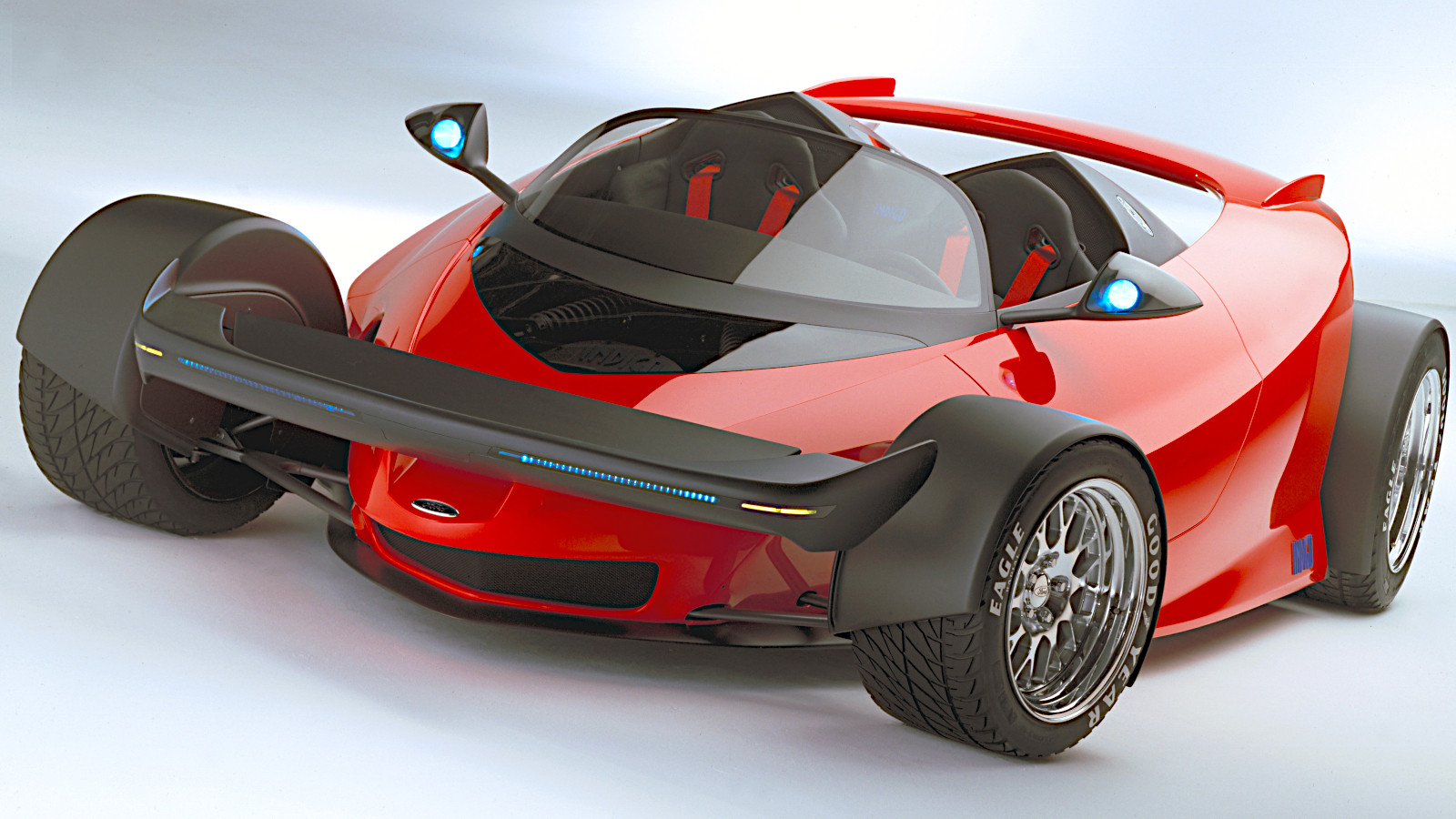 © Ford
© Ford -
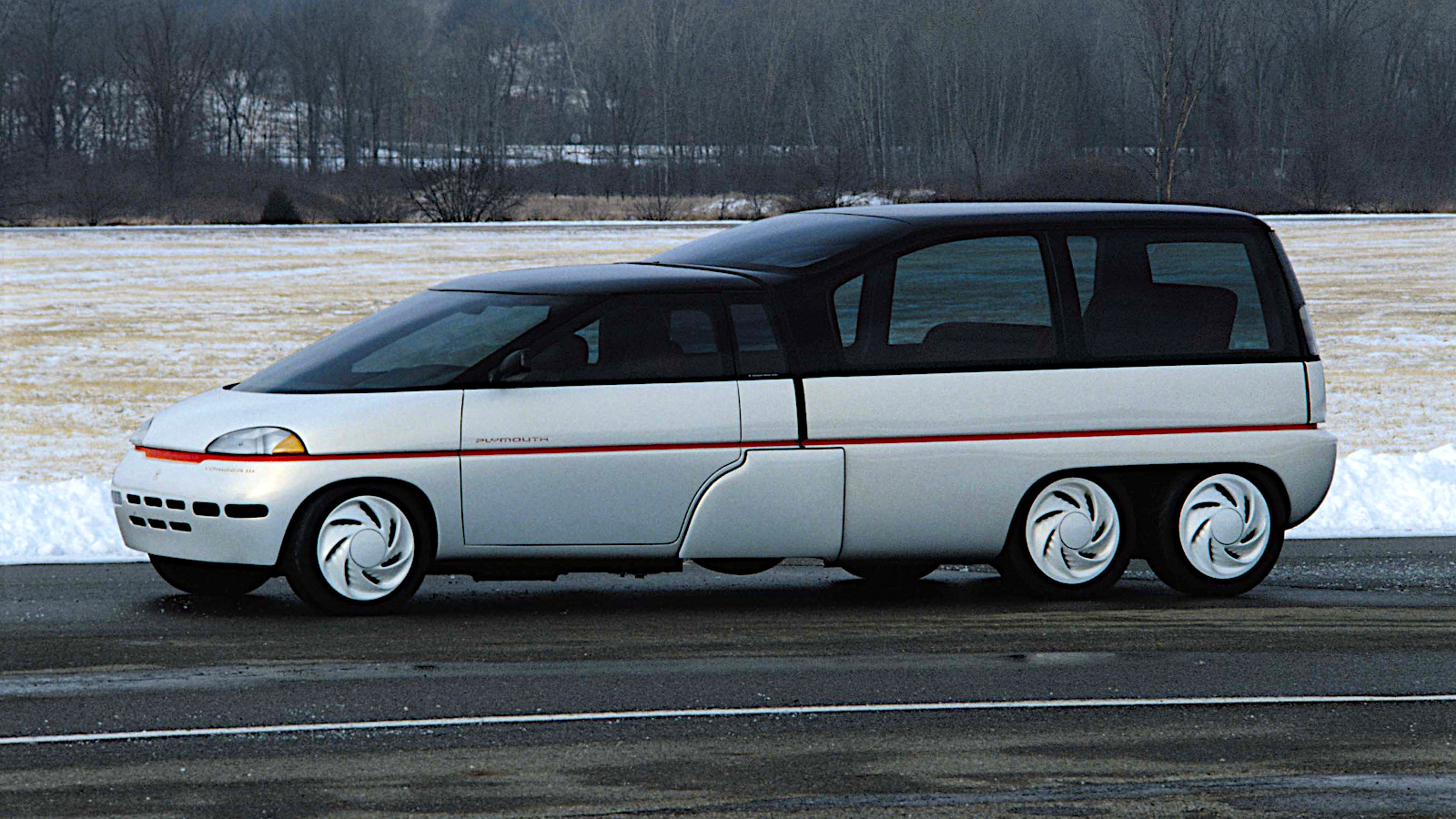 © Stellantis
© Stellantis -
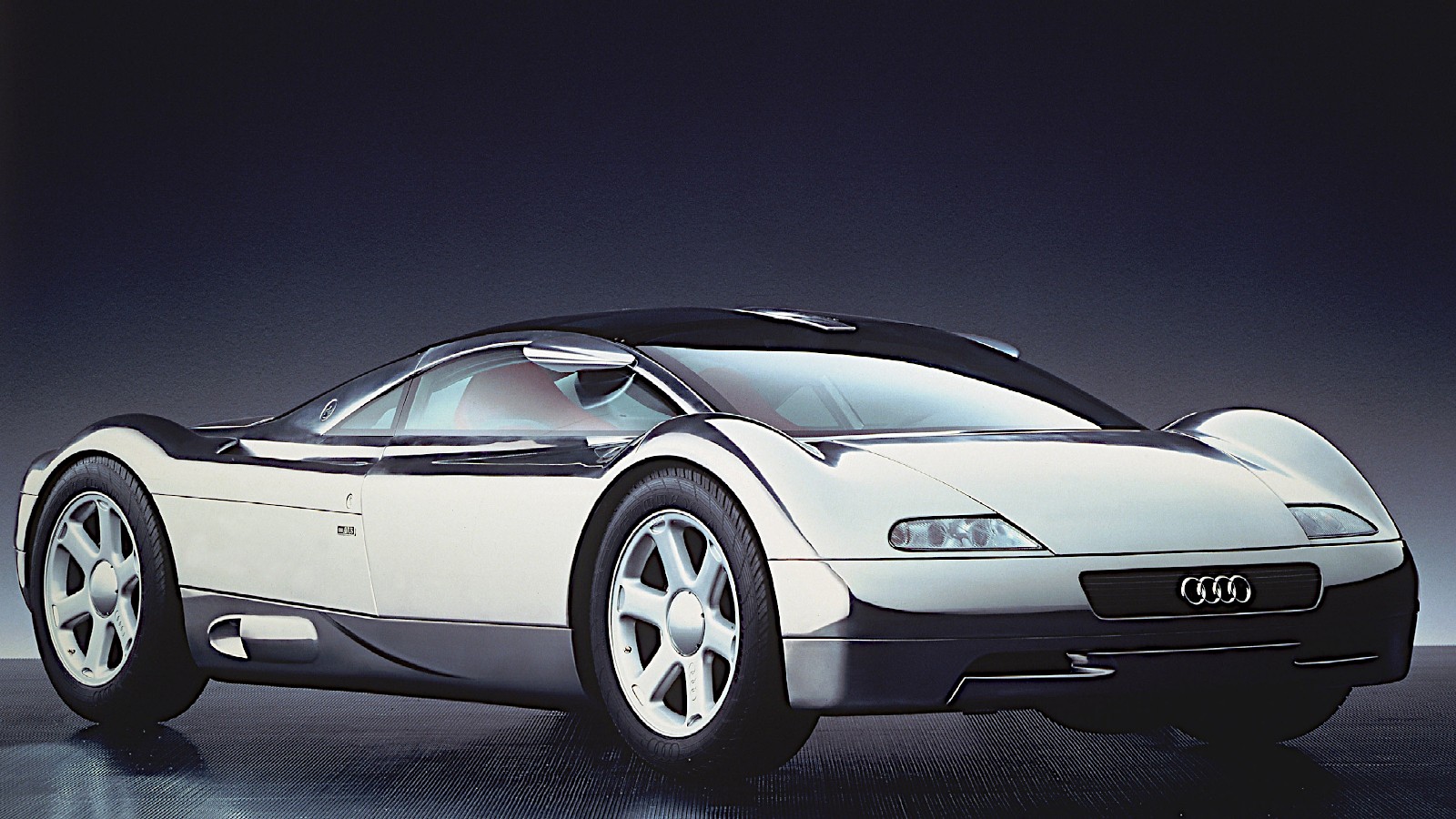 © Audi
© Audi -
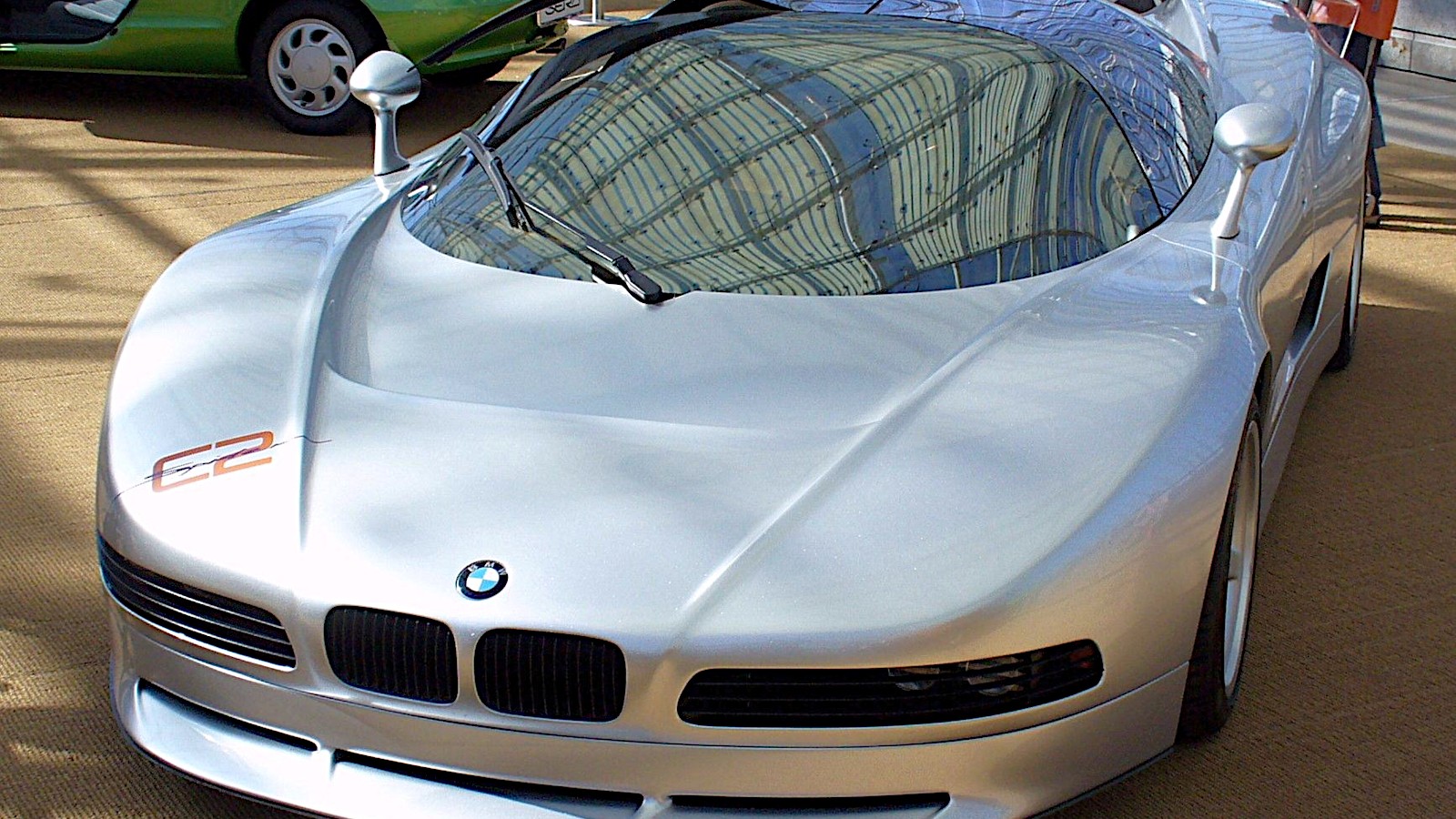 © Thomas Doerfer /https://creativecommons.org/licenses/by-sa/3.0/legalcode
© Thomas Doerfer /https://creativecommons.org/licenses/by-sa/3.0/legalcode -
 © BMW
© BMW -
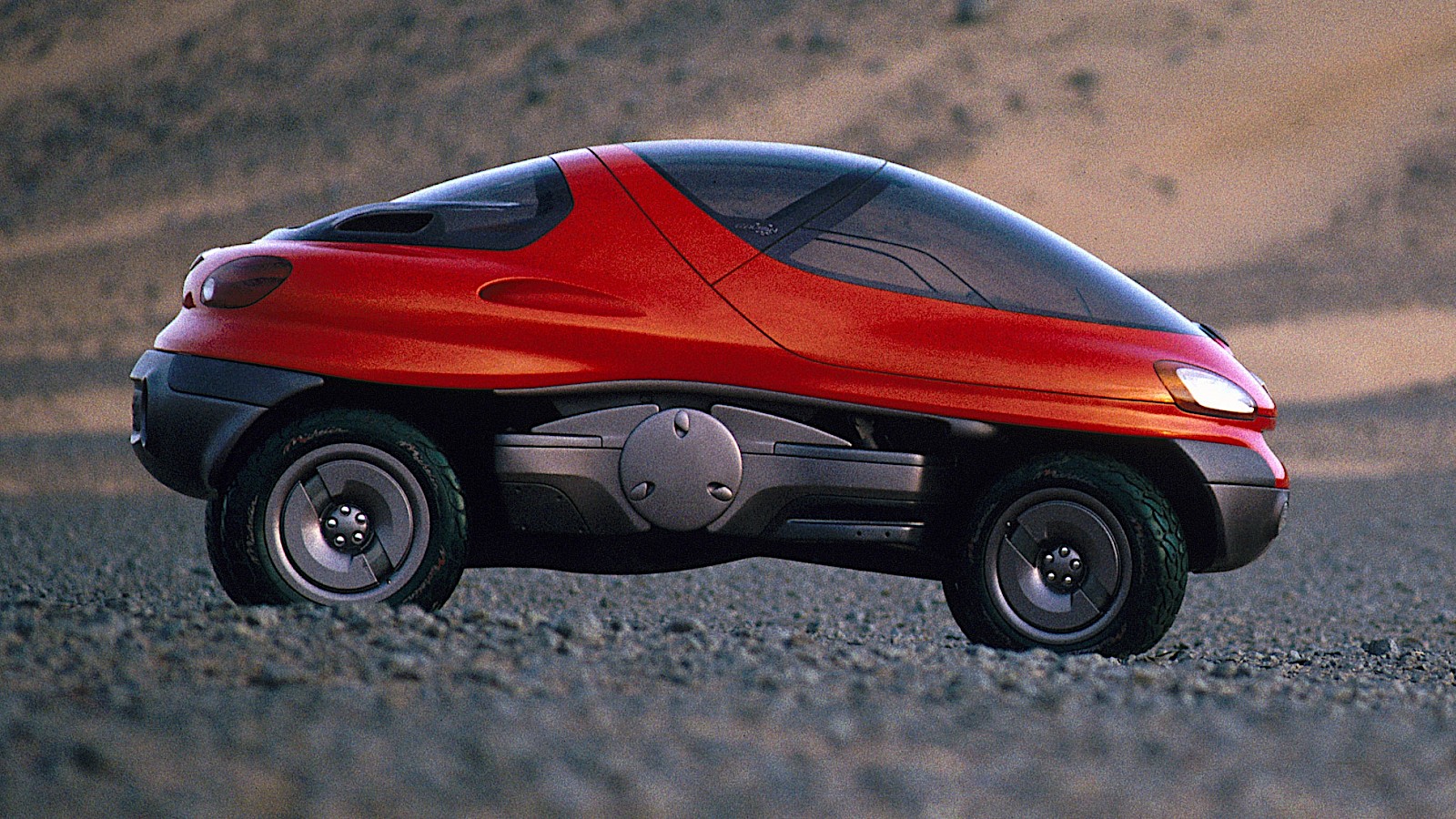 © Renault
© Renault -
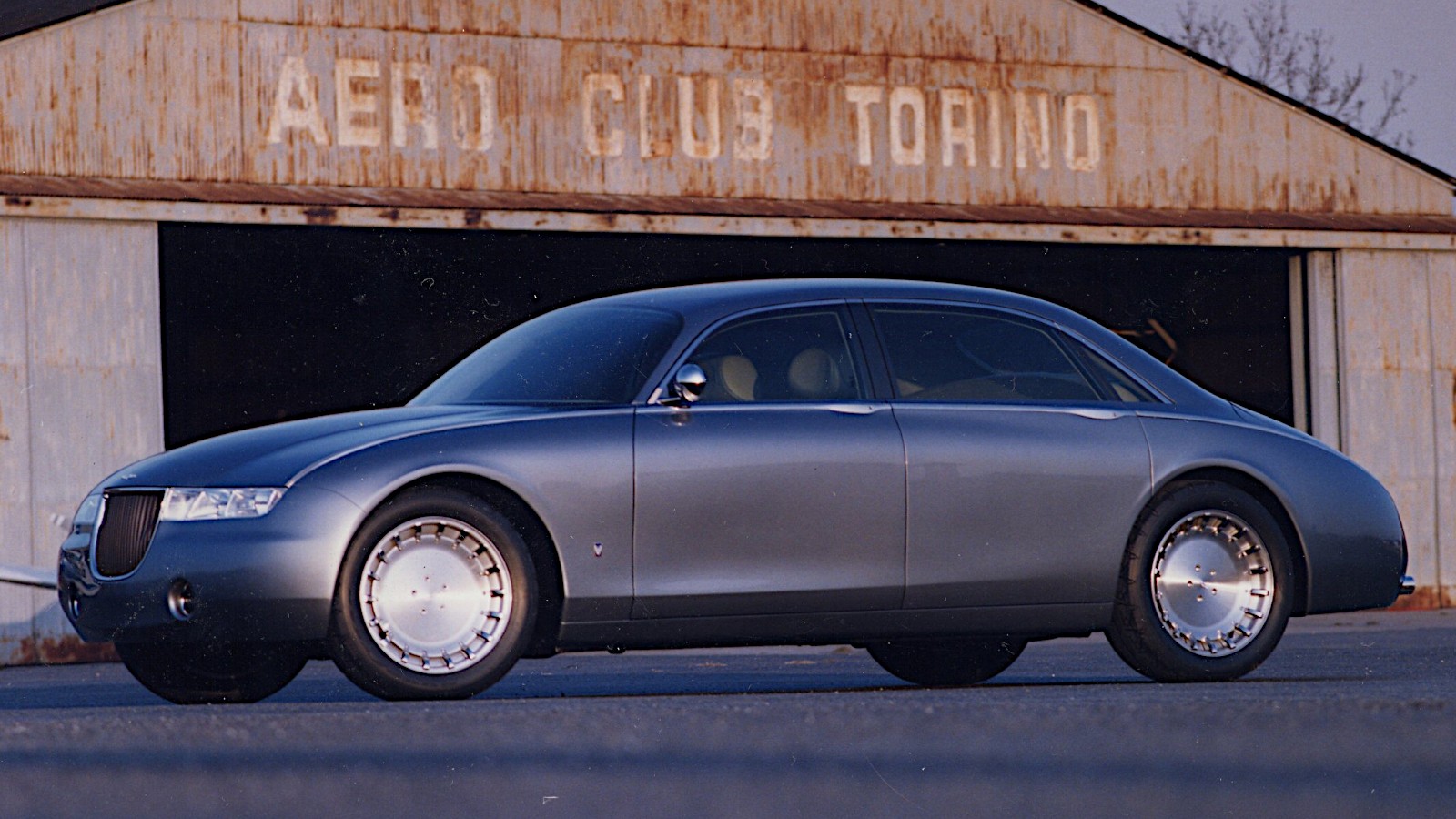 © Aston Martin
© Aston Martin -
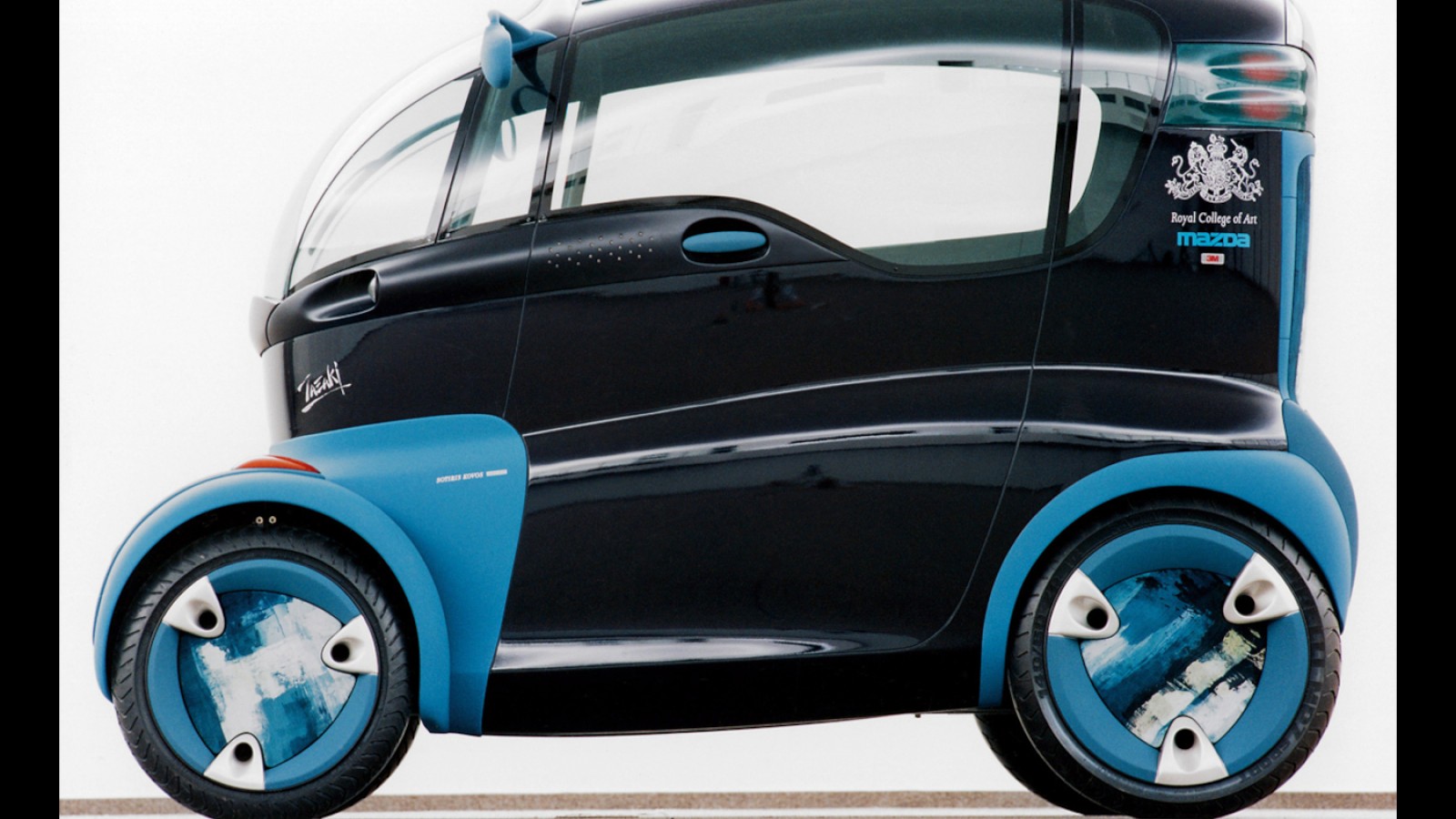 © Mazda
© Mazda -
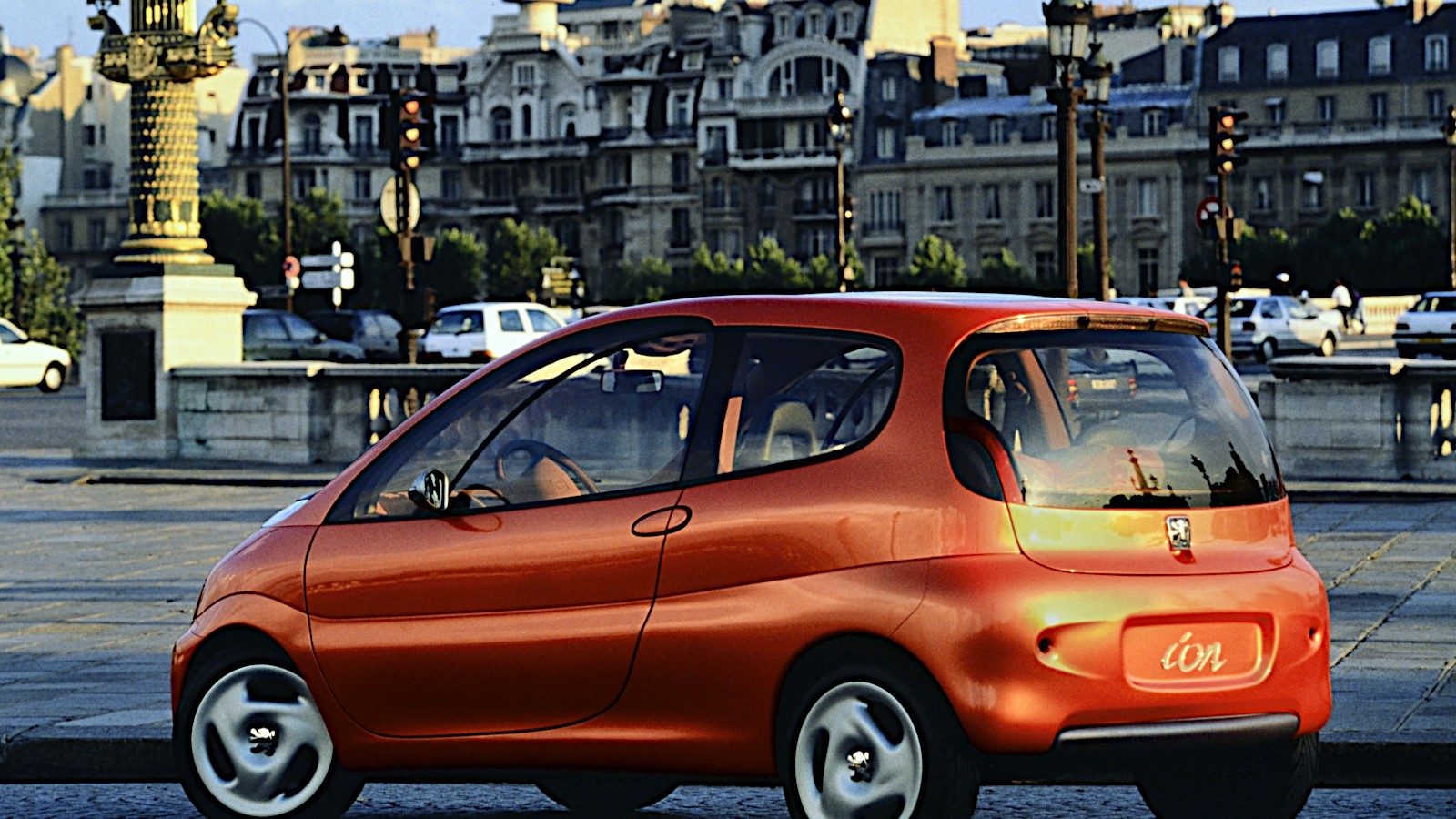 © Peugeot
© Peugeot -
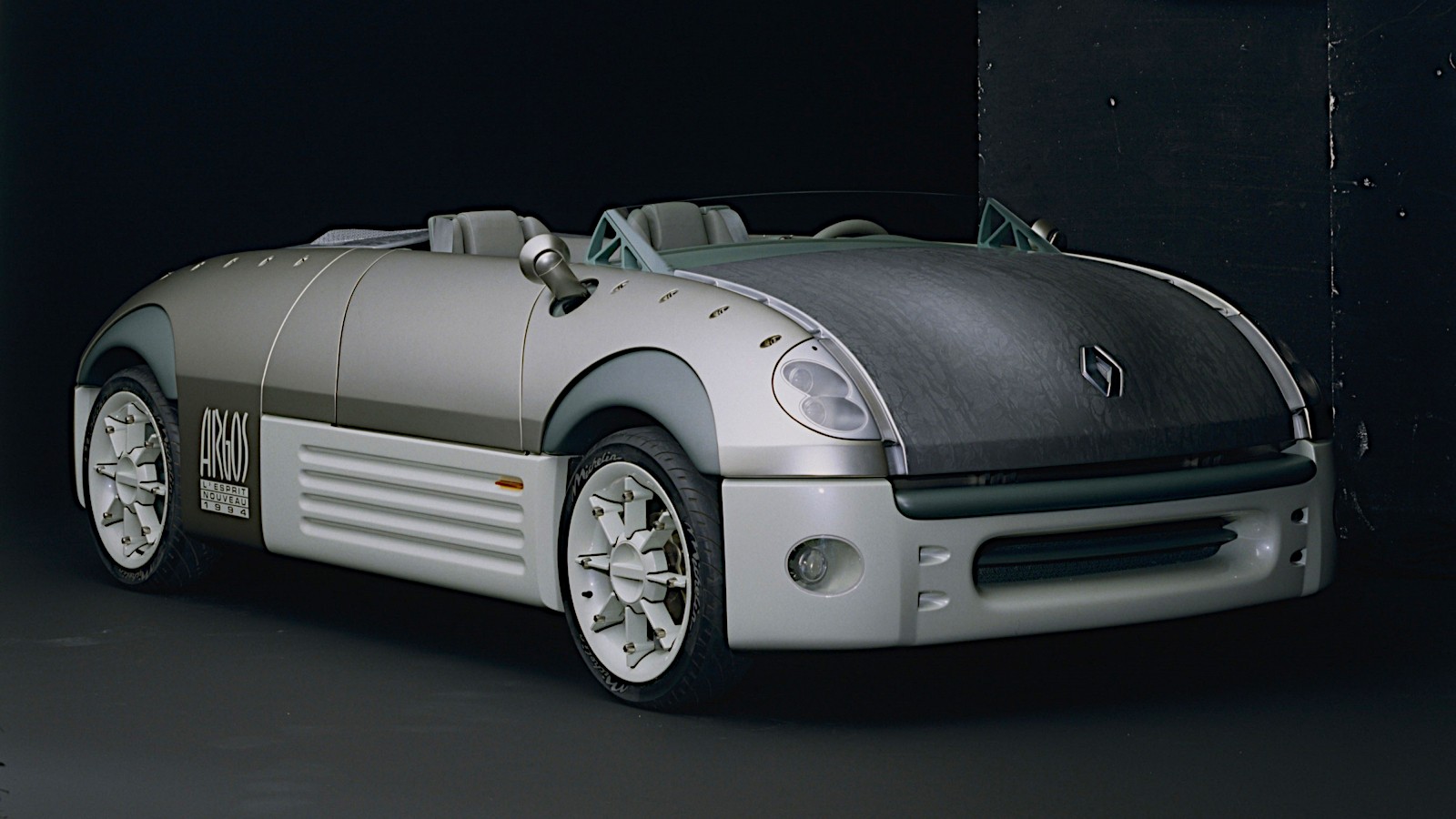 © Renault
© Renault -
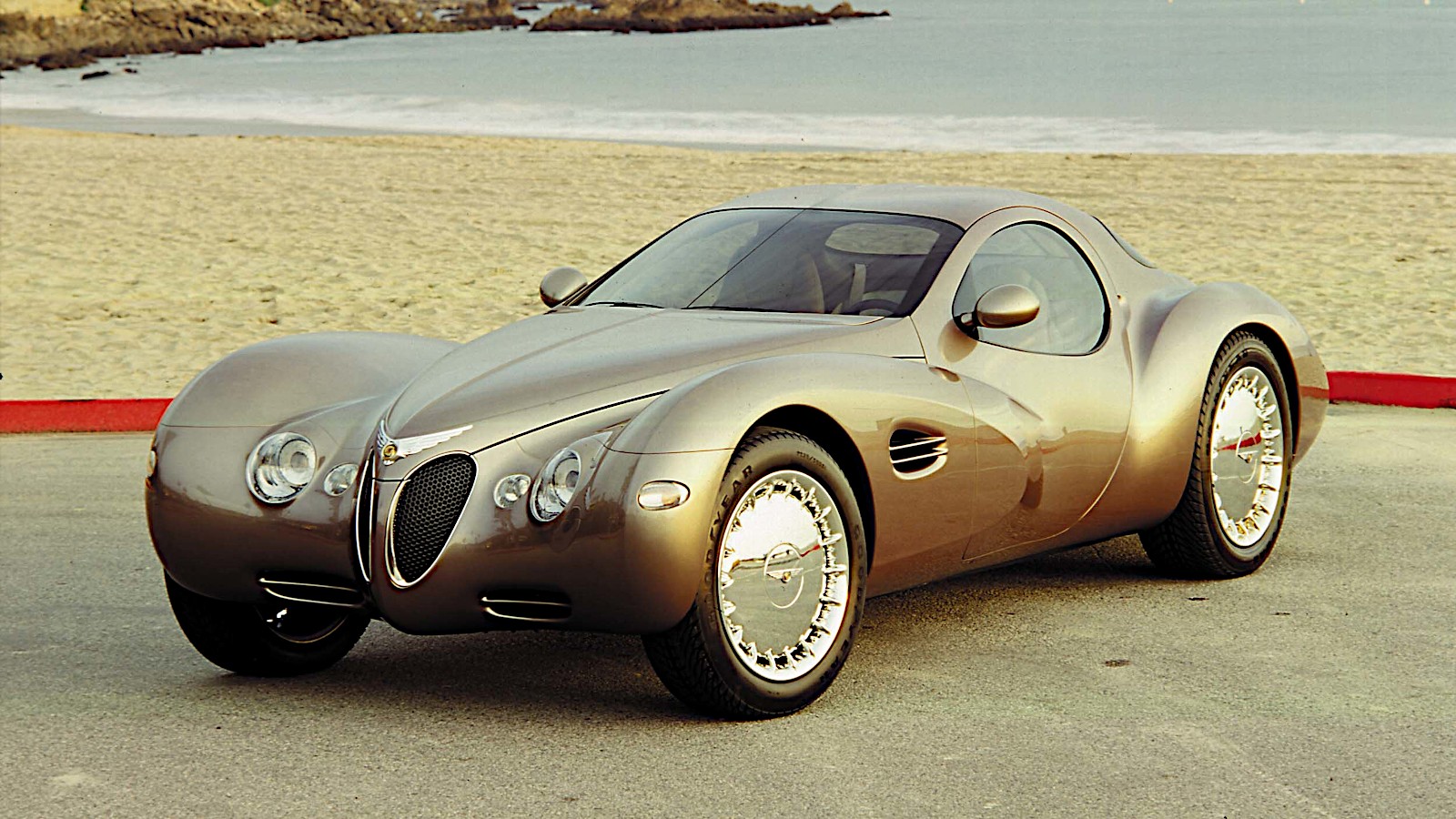 © Stellantis
© Stellantis -
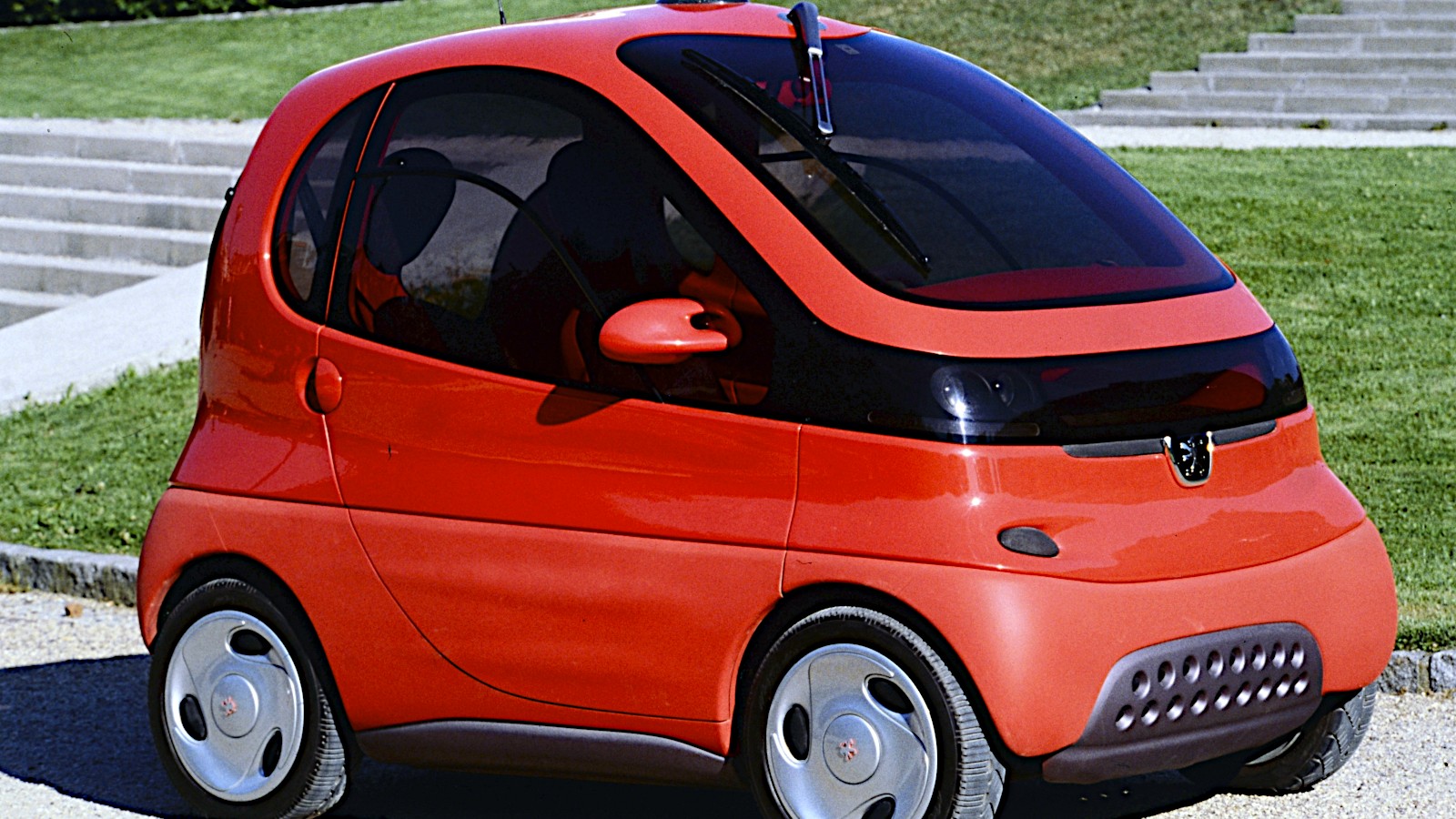 © Peugeot
© Peugeot -
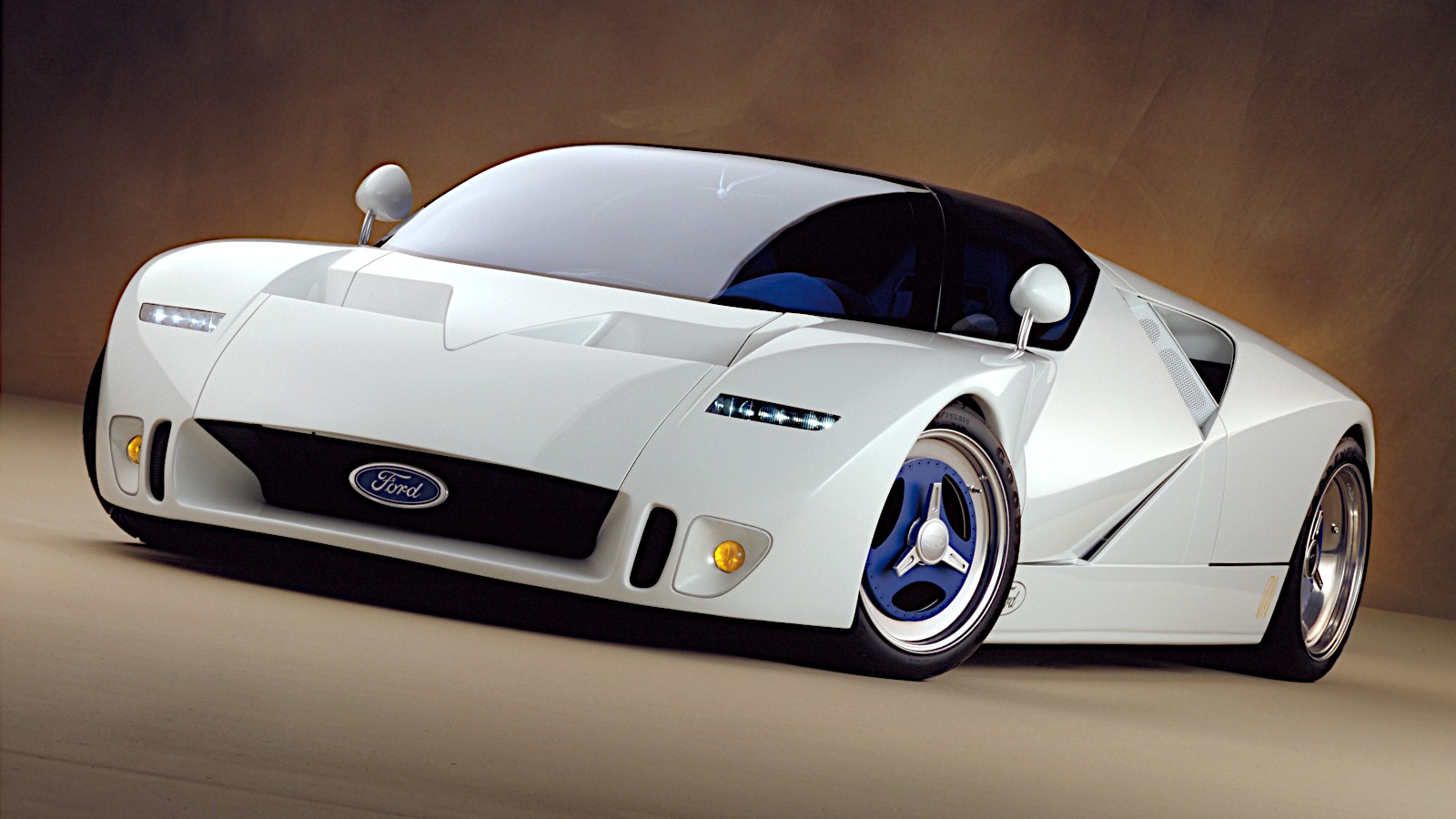 © Ford
© Ford -
 © Daimler
© Daimler -
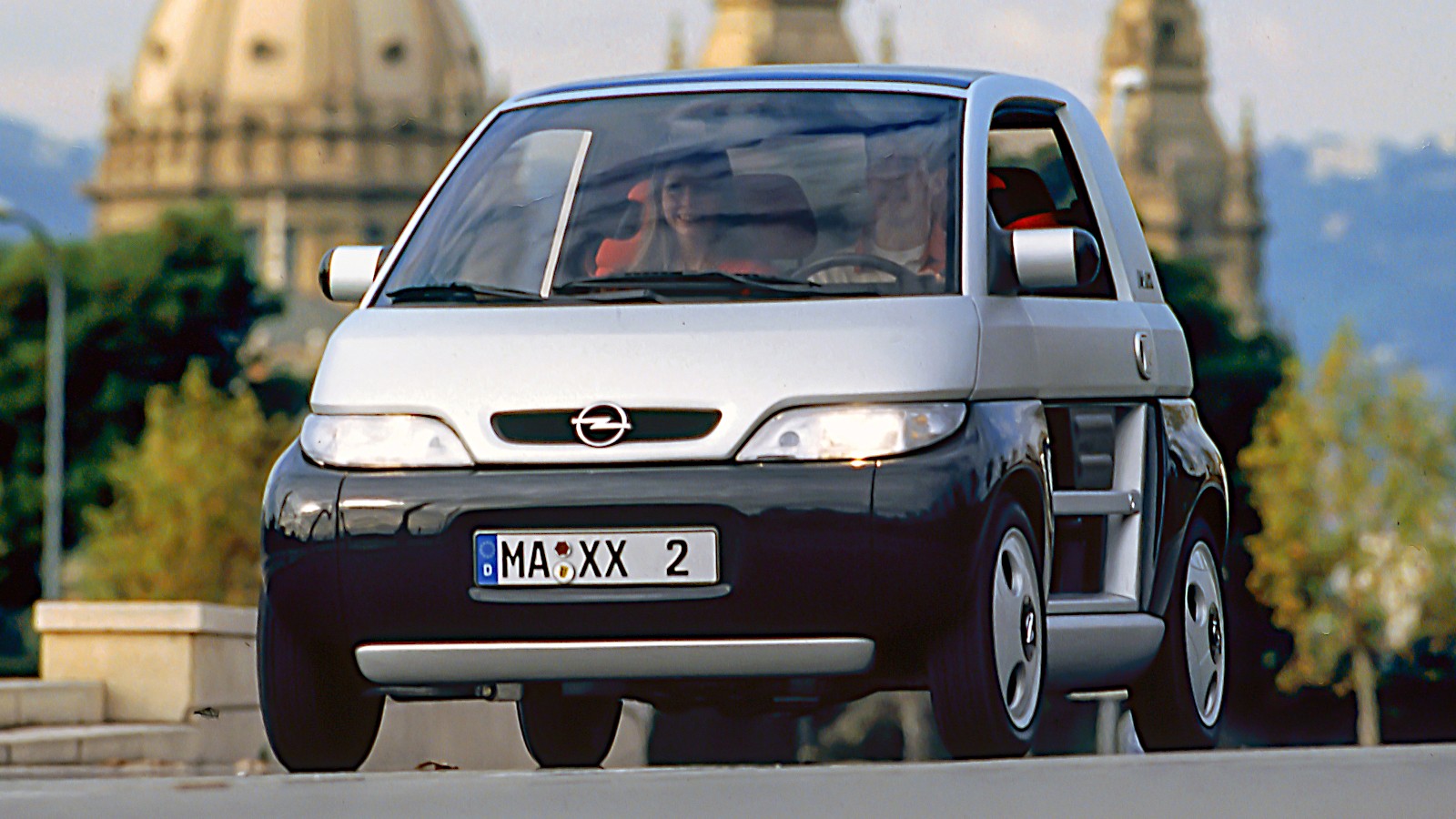 © Opel
© Opel -
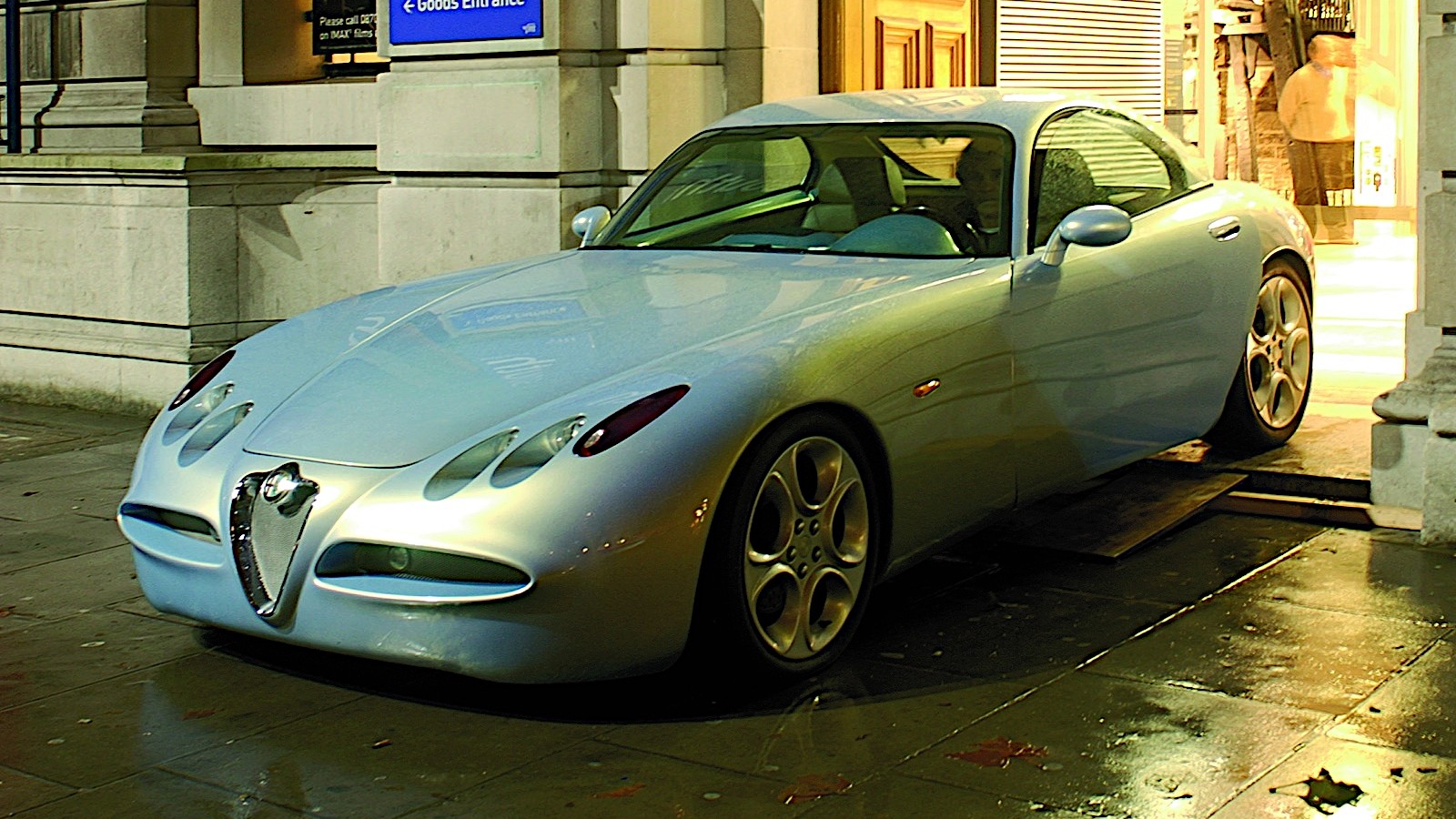 © Alfa Romeo
© Alfa Romeo -
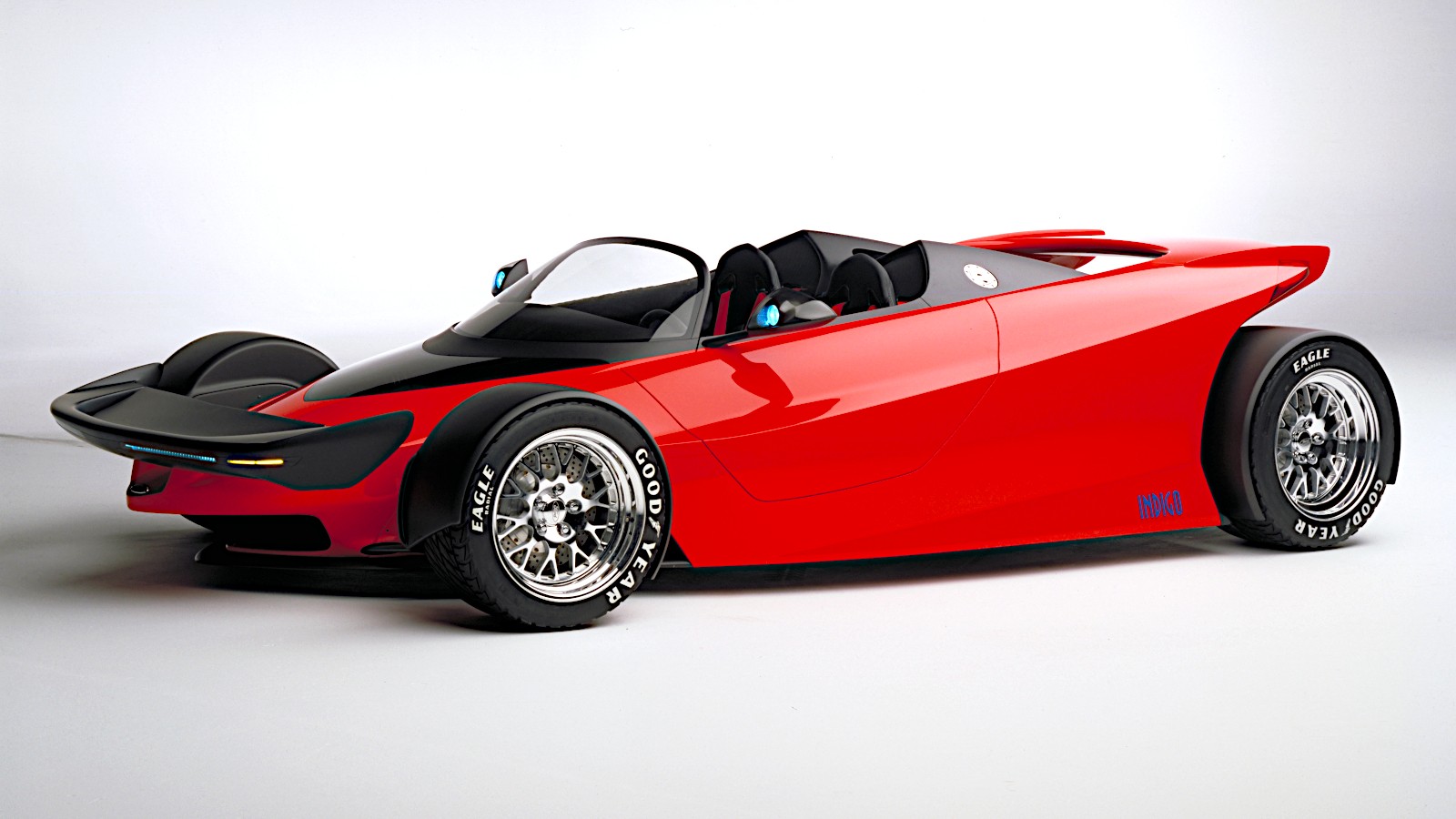 © Ford
© Ford -
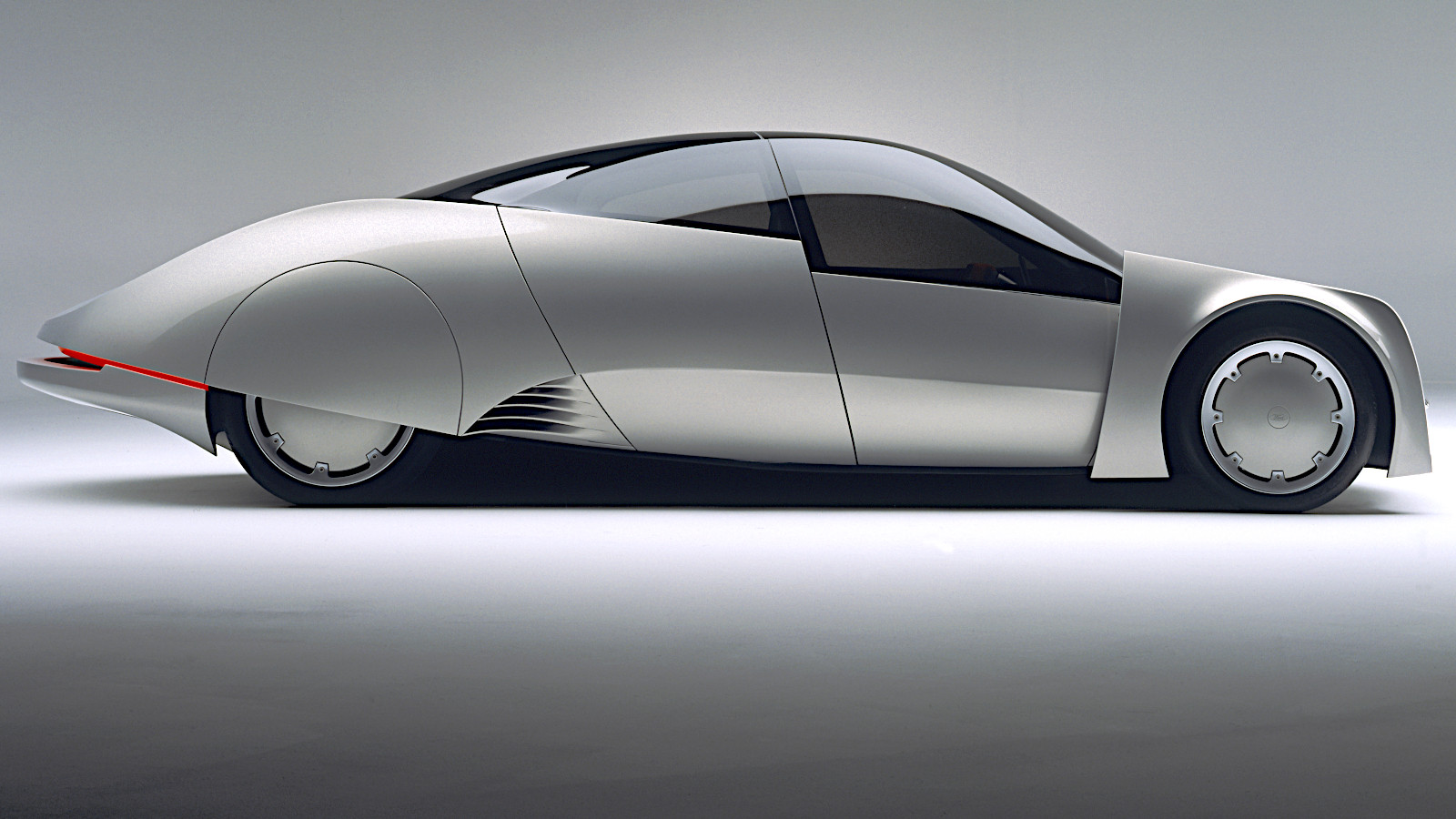 © Ford
© Ford -
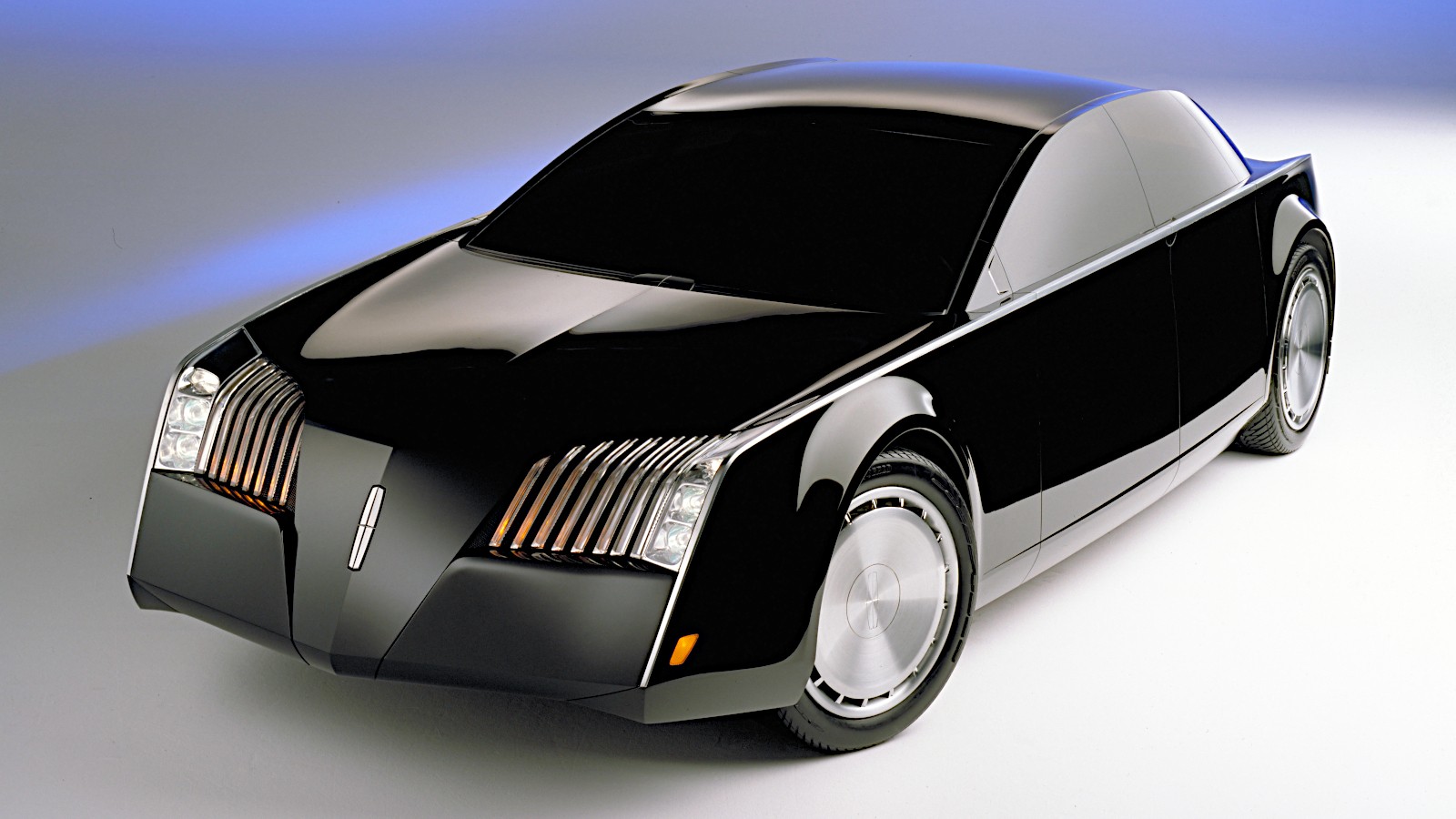 © Ford
© Ford -
 © Renault
© Renault -
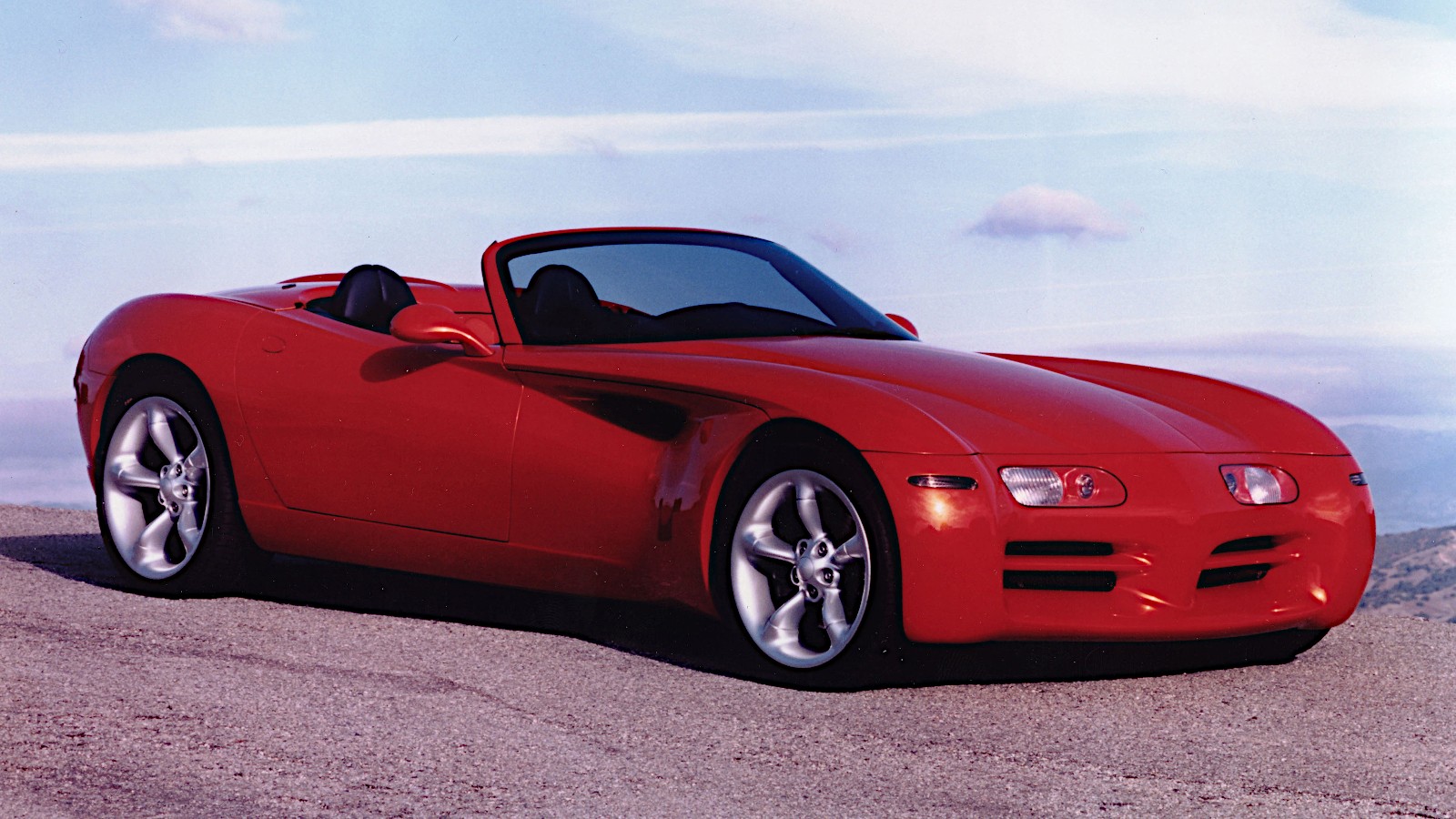 © Dodge
© Dodge -
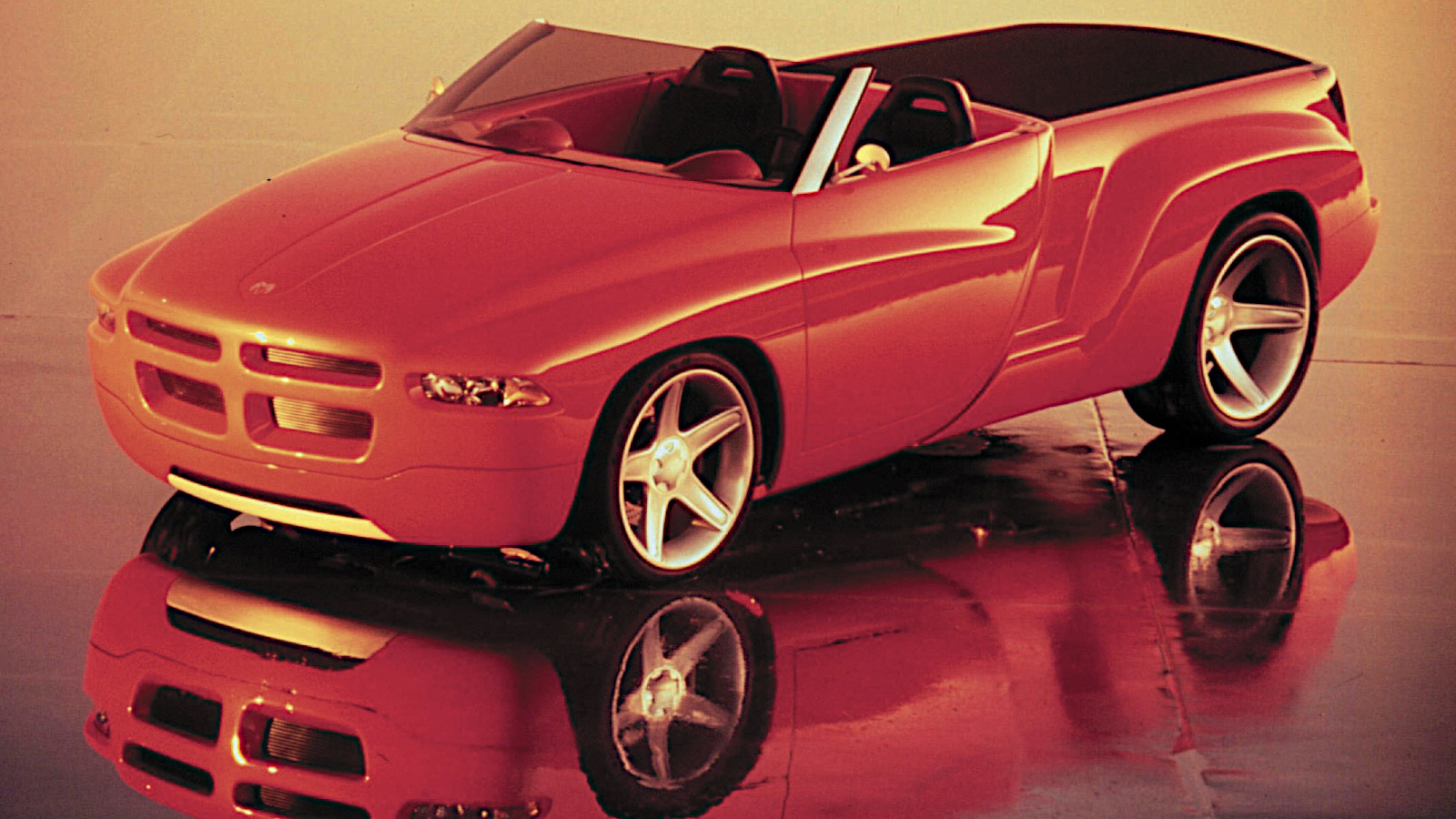 © Dodge
© Dodge -
 © Nissan
© Nissan -
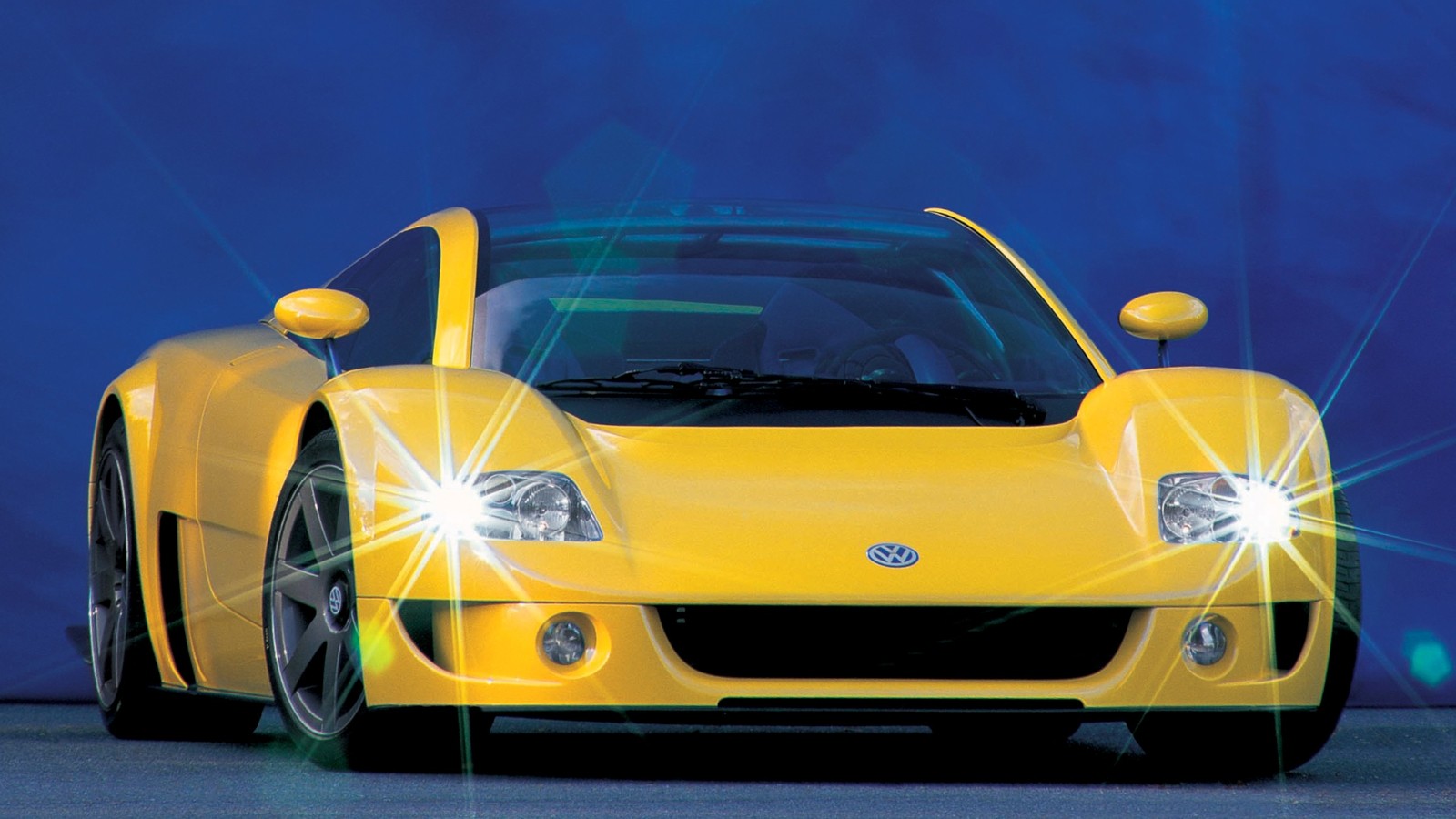 © Volkswagen
© Volkswagen -
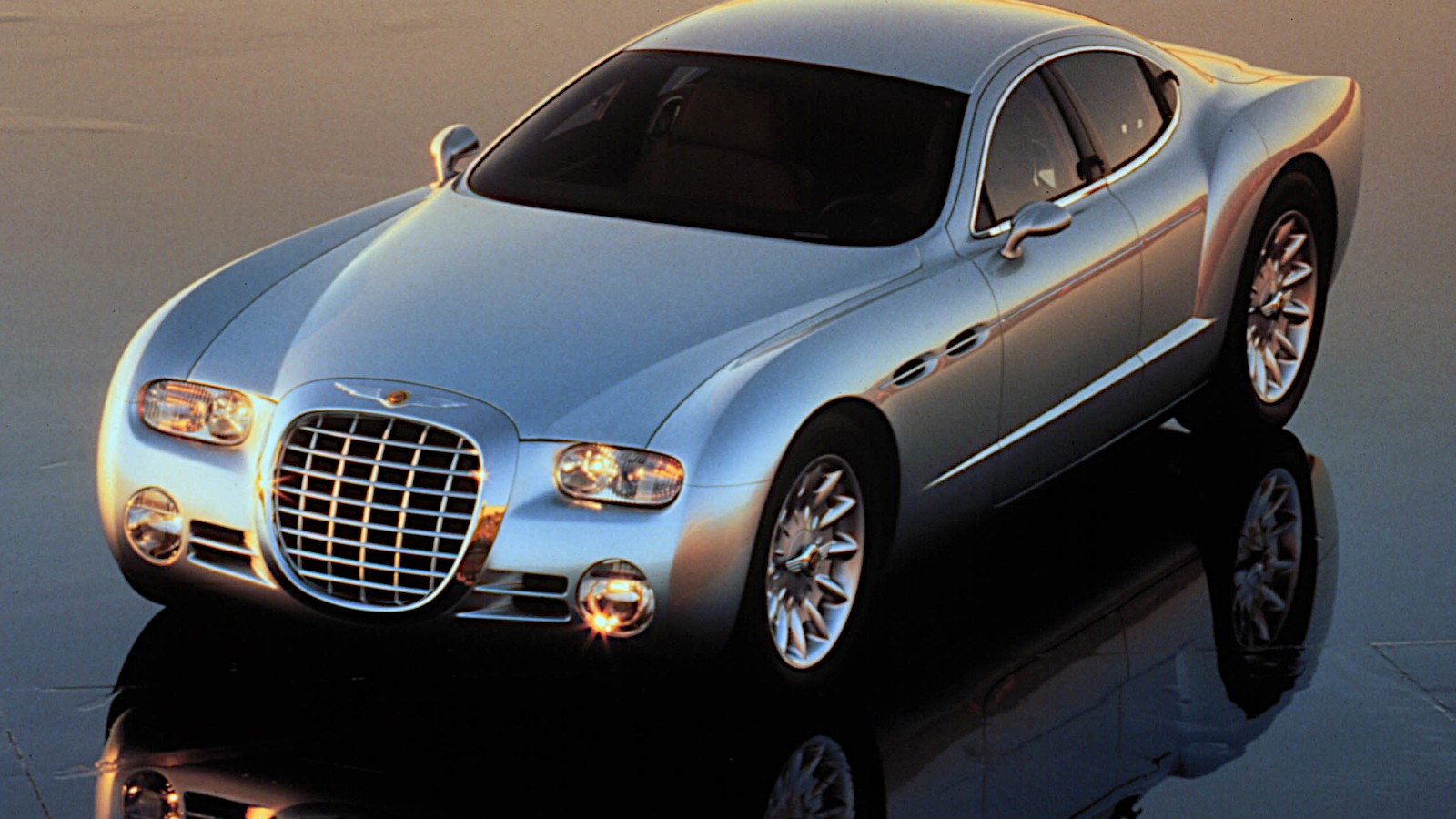 © Chrysler
© Chrysler -
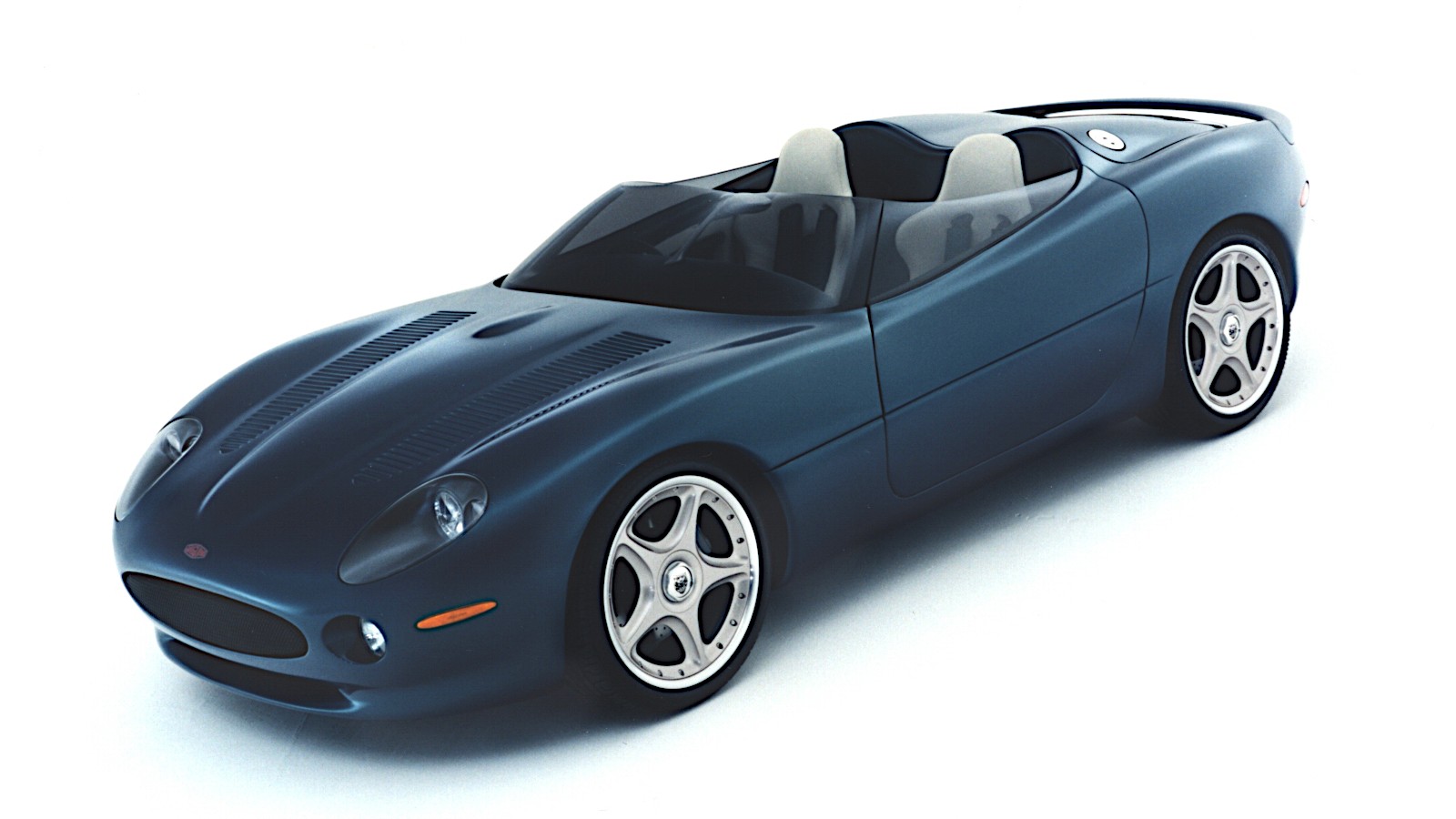 © Jaguar
© Jaguar -
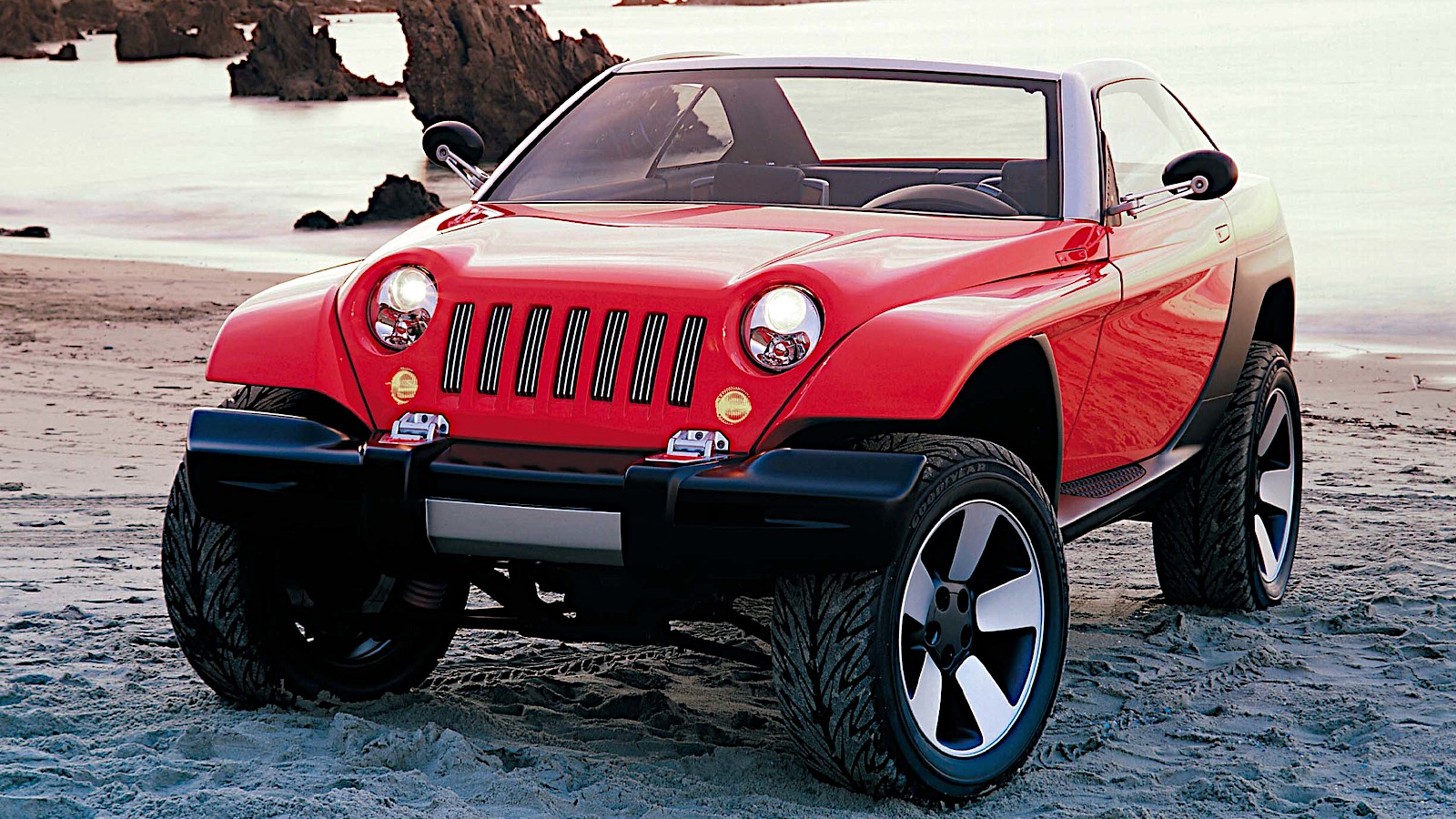 © Jeep
© Jeep -
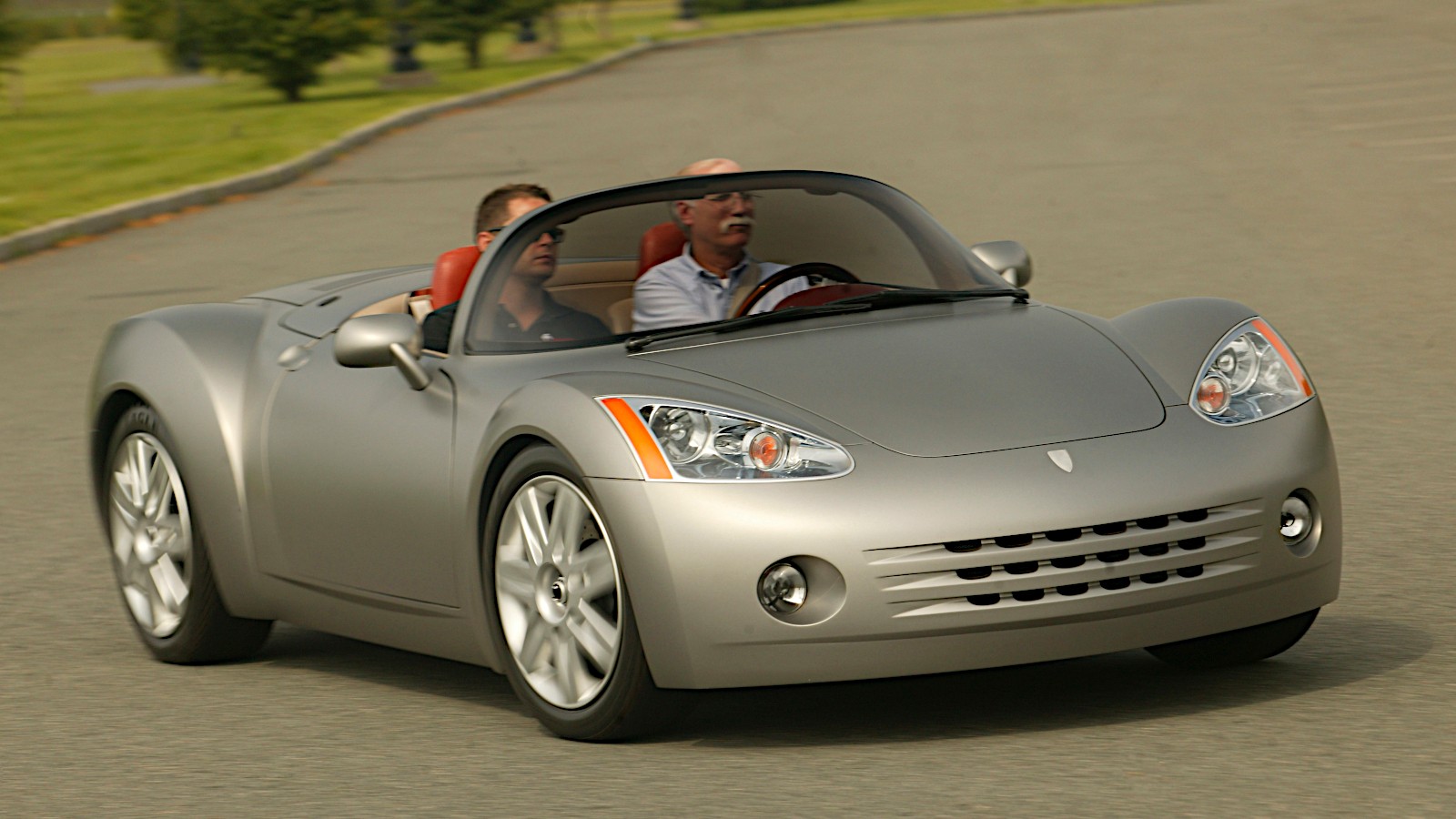 © Chrysler
© Chrysler -
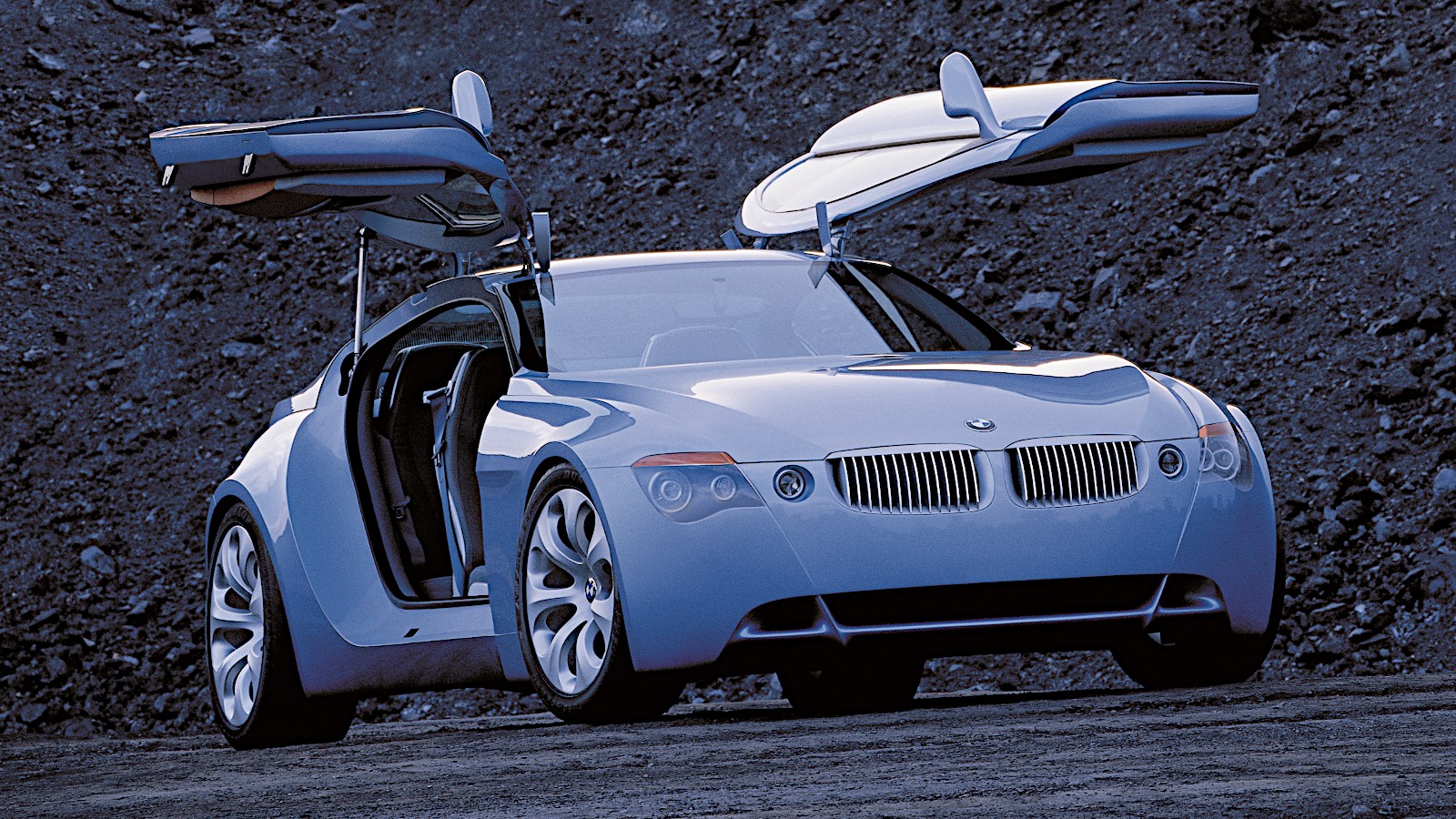 © BMW
© BMW -
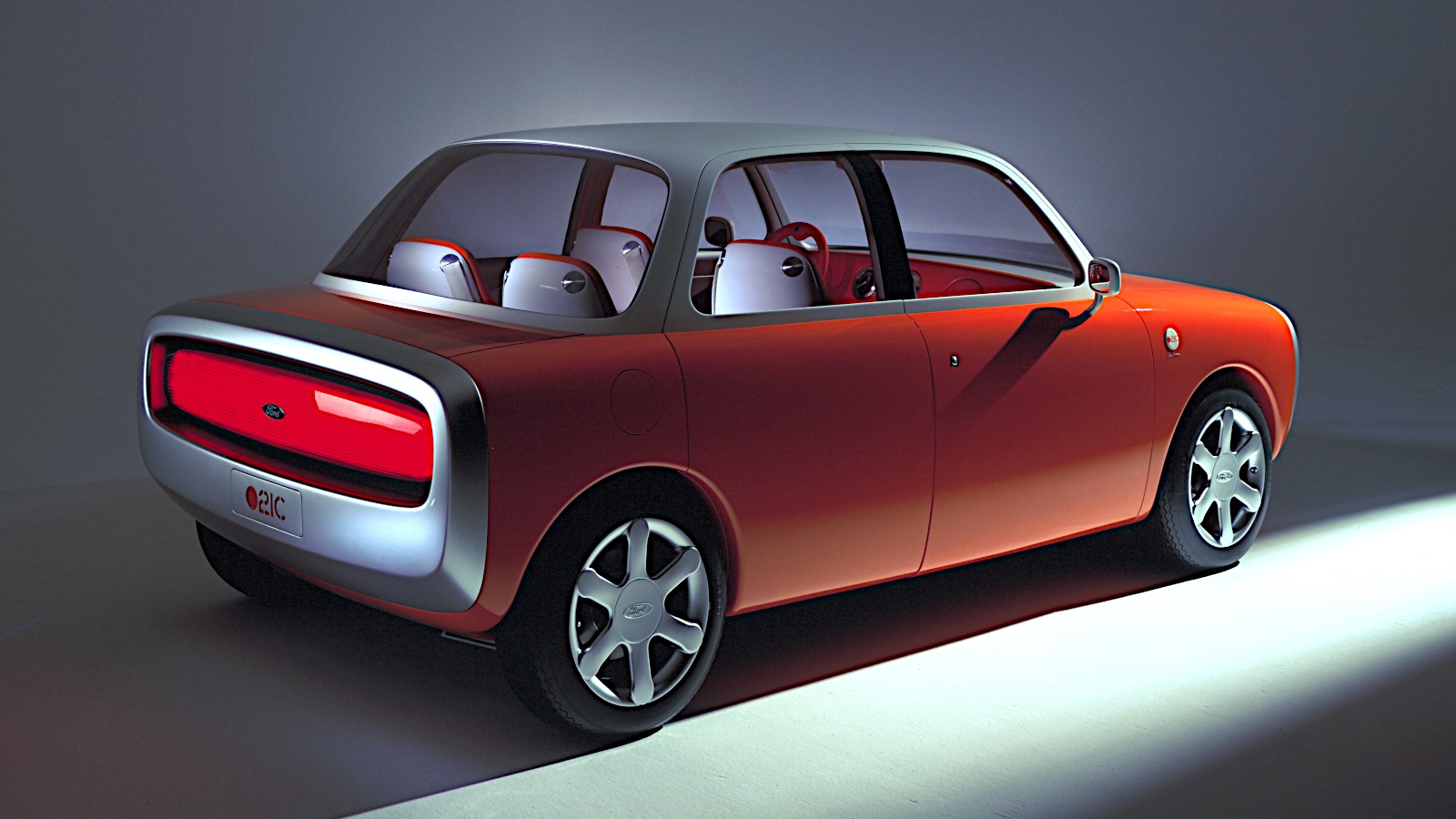 © Ford
© Ford -
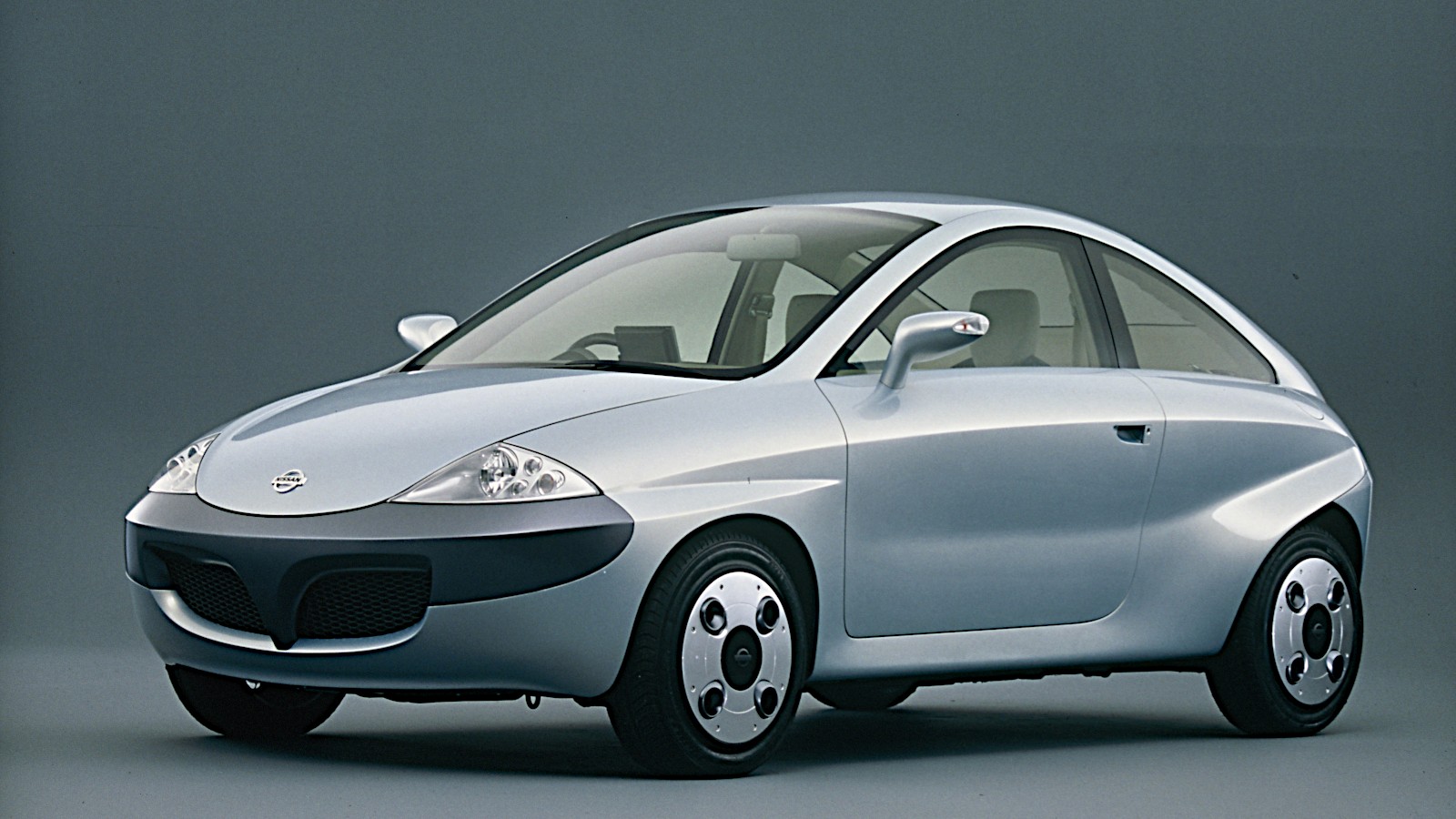 © Nissan
© Nissan
-
All show and no go?
While there may never be universal agreement about the date of the first concept car, it was certainly no later than 1938. By the 1990s, there was nothing remotely surprising about a manufacturer unveiling a vehicle which was not intended for production.
The cars themselves, however, could be very surprising indeed, and enlivened motor shows around the globe.
Some promoted new technology, others indicated new design trends, and a fair proportion were just plain silly, but we’re glad they were built anyway.
By way of celebration, here are 30 concept cars which made us gasp, smile or shake our heads in disbelief back in the 1990s. Let’s check them out in chronological order.
-
1. 1990: Plymouth Voyager III
Revealed at the 1990 Chicago Auto Show, the Voyager III was really two vehicles in one.
The front section was a three-seat compact car which could be driven on its own. Alternatively, the five-seat rear could be attached to it, completing an immensely long device which must have been a nightmare to park or reverse.
Each section had four wheels and a four-cylinder Chrysler engine. Two decades after it was built, the Voyager III was referred to in a sentence which also included the words the ‘nadir of American auto design’.
-
2. 1991: Audi Avus
The Avus was named after an extremely fast race track in Berlin (really just two carriageways of the same autobahn with a corner at each end) and inspired by the streamlined Auto Union Grand Prix cars which raced there in the 1930s.
It first appeared at the 1991 Tokyo Show with what seemed to be a 6.0-litre W12 engine, though this was in fact a mock-up.
More significantly, the Avus was based on an aluminium spaceframe, a technology Audi has used for many production cars in the past 30 years.
-
3. 1992: BMW Nazca C2
The Nazca C2 was the second in a series of three early ’90s BMW concepts. It was a restyled, lighter version of the 1991 Nazca M12, and was followed by the open-topped 1993 C2 Spider.
All three were designed on BMW’s behalf by Italdesign, and were fitted with V12 engines also found in the 8 Series grand tourer.
In the case of the Nazca C2, the V12 measured 5.0 litres and produced 350bhp, reputedly enough for a 193mph top speed.
-
4. 1992: BMW E1
Beyond the fact that they wore the same badge, there was almost no connection between the Nazca C2 and another BMW concept of the same year.
The E1 was a roomy four-seat hatchback powered by an electric motor, an idea which had fallen out of favour much earlier in the 20th century and would not be taken very seriously again until the 21st.
The power output was a mere 45bhp, but thanks to light weight, an aerodynamic shape and regenerative braking the official range was quoted as being 155 miles.
-
5. 1992: Renault Racoon
The ‘aquatic-capable’ Racoon concept had a twin-turbo 3.0-litre V6 petrol engine driving all four wheels. What it didn’t have was doors. The driver and passenger had to get in and out through a canopy, which would have been problematic if the car had landed upside down.
Satellite navigation, remote entry, variable ground clearance and the use of cameras instead of rear-view mirrors all seem familiar enough today, but they were very surprising features of the Racoon when it was unveiled in 1992.
-
6. 1993: Aston Martin Lagonda Vignale
Conceived during the period when Aston Martin was owned by Ford, the Lagonda Vignale was at heart an extended version of Ford luxury brand Lincoln’s Town Car.
The ideas of creating a four-door Aston Martin saloon and reviving the Lagonda name did not last long, and the car did not make it past the concept stage.
The exterior styling was by Moray Callum, whose later work included overseeing the design of the third-generation Mazda MX-5, among many other well-known projects.
-
7. 1993: Mazda London Taxi
This concept was the result of a collaboration between Mazda and the London Royal College of Art.
It was designed for an imagined future in which road space was very limited, and could therefore accommodate only the cabbie and one passenger.
Built in 1993, the vehicle has never been displayed at a motor show.
-
8. 1994: Peugeot Ion
Like the BMW E1 of two years before, the Ion was an electric car conceived at a time when the future of such things seemed very uncertain.
Revealed at the 1994 Paris Motor Show, it featured doors which could be opened by leaning against the rear wings – very useful for anyone holding luggage or bags of shopping in each hand.
Many years later, Peugeot would launch a small electric car with a very similar name. However, the i0n was, like the Citroën C-Zero, simply a rebadged Mitsubishi i-MiEV with almost no French input.
-
9. 1994: Renault Argos
The Argos was a lightweight (750kg) three-seat roadster which resembled the later Spyder in shape (and lack of roof or windscreen) and the second-generation Clio in some of its design details.
One trick which did not feature on either of those production models was that the mirrors and doors retracted into the front and rear wings respectively when not required.
-
10. 1995: Chrysler Atlantic
This retro concept was inspired by the most expensive and fashionable cars of the 1930s, in particular the Atlantic Coupé versions of the Bugatti Type 57.
The references to cars built six decades earlier even extended to the 4.0-litre engine, whose straight-eight layout had long-since gone out of fashion.
It was built using components from a pair of 2.0-litre four-cylinder units, as fitted to the Chrysler/Dodge/Plymouth Neon and the PT Cruiser.
-
11. 1995: Peugeot Tulip
Also badged as a Citroën on some of its appearances, the Tulip (which stood for Transport Urbain Libre Individual et Public) was an electric city car with a top speed of just 44mph.
It was the subject of a trial in the French city of Tours. Nobody was expected to buy the car. Instead, subscribers had access to them to use essentially as self-driven taxis. The batteries were charged by induction at the relay points where they were parked when not in use.
-
12. 1995: Ford GT90
The GT90, built on an extended version of the Jaguar XJ220 platform, was in effect a successor to Ford’s Le Mans-winning GT40 and the far less well-known GT70.
It was outstandingly more powerful than either. The quad-turbo V12 engine – based on the Ford Modular unit used for various Fords, Mercurys and Lincolns, and sold to some other manufacturers – was said to produce 720bhp and give the car a top speed of over 250mph.
-
13. 1995: Mercedes-Benz VRC
The fact that the Vario Research Car displayed at the 1995 Geneva show had front-wheel drive and Active Body Control was significant, but it was also swamped by the concept’s most interesting feature.
Customers of a production version would own most of the car, but rent its body. There was a choice of four, all made of carbonfibre-reinforced plastic: a saloon, an estate, a convertible and a pick-up.
The owner would choose one at the time of purchase but could have it swapped for any of the others at a Mercedes dealer in just 15 minutes. The idea has not caught on.
-
14. 1995: Opel Maxx
Displayed in Geneva as an Opel and in London as a Vauxhall, the Maxx was the smart fortwo rival that never happened.
Based on an aluminium frame, this tiny city car measured less than ten feet from bumper to bumper.
The Maxx reappeared at Geneva in 1996 fitted with a 1.0-litre three-cylinder petrol engine, the only feature of the car which ever made it to production – it was introduced in the Corsa the following year.
-
15. 1996: Alfa Romeo Nuvola
Without referring any specific previous model, the Nuvola had an air of the 1930s about it. It had a separate body mounted on a steel spaceframe and was fitted with a 2.5-litre twin-turbo V6 which must have sounded glorious.
Nuvola is the Italian word for ‘cloud’, but it also refers to racing driver Tazio Nuvolari, who drove an Alfa to victory at the 1935 German Grand Prix, beating the Mercedes and Auto Union teams while high-ranking Nazi officials looked on in dismay.
-
16. 1996: Ford Indigo
One of Ford’s most exciting concept cars, the Indigo was a wedge-shaped open two-seater with partly exposed wheels and a prominent front wing. Three were built by British race-car manufacturer Reynard.
Of these, only one had an engine. It was a howling 435bhp 5.9-litre V12, different from the one used in the Ford GT40 but based on the same Modular V8.
Although the Indigo never went into production, the V12 was developed further and used in the Aston Martin DB7 from 1999 to 2003.
-
17. 1996: Ford Synergy
Dramatically unlike the Indigo, the Synergy was a six-seat saloon with an exceptionally aerodynamic lightweight aluminium body. A 1.0-litre petrol engine acted as the generator in an otherwise all-electric powertrain.
The Synergy was Ford’s idea of what a mid-sized saloon would look like in 2010. What we got instead was a facelifted version of the fourth-generation Mondeo.
-
18. 1996: Lincoln Sentinel
No relation to the Kansas newspaper of the same name, this concept from Ford’s luxury brand made its debut alongside the Indigo at the 1995 North American International Auto Show in Detroit.
The two cars shared the same V12 engine but were otherwise dramatically different.
The Sentinel was a large saloon with frameless windows, 20-inch wheels and an overall length of over 18 feet. The front grille design echoed that of the 1955 Lincoln Continental.
-
19. 1996: Renault Fiftie
The fabulously cute Fiftie made its debut at the 1996 Geneva show. Its name refers to the 50th anniversary of Renault’s first post-war car, the 4CV (which the Fiftie closely resembled), making its public debut in Paris, though that model did not go on sale until 1947.
Despite its retro looks, the Fiftie had a carbonfibre body mounted on the aluminium frame of the Renault Spider sports car. The new, rear-mounted D Engine was subsequently fitted to the first-generation Twingo, replacing the old Cléon-Fonte unit which Renault had been using in an extraordinary number of models since 1962.
-
20. 1997: Dodge Copperhead
Chrysler said the Copperhead was ‘in the tradition of’ the Austin-Healey 3000.
Powered by a 2.7-litre V6 engine, it might have appealed to buyers who wanted something sportier than a Plymouth Prowler but couldn’t afford a Dodge Viper. Unlike those models, however, it was never put into production.
It is now referred to retrospectively as the Dodge Concept Vehicle, following a complaint by ZZ Top singer Billy Gibbons, who had registered the name Kopperhead for a customised 1950 Ford.
-
21. 1997: Dodge Dakota Sidewinder
Quite different from Dodge’s Copperhead concept of the same year, the Sidewinder was an enormously powerful sports truck.
The chassis was built by race-car manufacturer Riley & Scott, while the 600-plus bhp 8.0-litre V10 came from the Dodge Viper GTS-R competition car.
The Sidewinder might have been popular in Australia, where muscular utes are favoured, but there seem to have been no plans to build a production version.
-
22. 1997: Nissan Stylish 6
Surely one of the best-named concepts of the decade, the Stylish 6 had six seats arranged in two rows of three and six cylinders in its 2.5-litre engine. The engine was part of a petrol-electric hybrid powertrain, and drove through a CVT transmission.
This was Nissan’s idea of what an estate car of the future might be like. In 1997, nobody realised that estate cars would become very much a minority interest within two decades, due to the astonishing rise in popularity of the SUV.
-
23. 1997: Volkswagen W12
Volkswagen commissioned Italdesign to make a four-wheel-drive sports coupé which would be used as the showcase for a new 5.6-litre W12 engine, essentially a combination of two 2.8-litre VW VR6 units.
The car made its debut at the Tokyo show in 1997 and was followed by first a Roadster version, then a 6.0-litre variant named Nardò, after the Italian test track when it averaged 200.6mph for 24 hours.
The car never went into volume production, but the engine was used first in the Volkswagen Phaeton and later in other VW Group products, including the Bentley Continental.
-
24. 1998: Chrysler Chronos
Despite a very different headlight treatment, the Chronos was broadly influenced by the design of an early Chrysler concept, the D’Elegance of 1953, and some styling elements reappeared in the Chrysler 300C which made its debut in 2004.
The considerable 17-foot length of the body was emphasised by a steep windscreen, a low roofline and a cab-backward design. Power was provided by a 6.0-litre V10 engine.
-
25. 1998: Jaguar XK180
The XK180 was unveiled at the 1998 Paris Motor Show, 50 years to the month after Jaguar’s first XK model, the almost shocking XK120, made its debut at Earls Court in London.
Development took just 10 months, partly because the XK180 was essentially a shortened, re-bodied Jaguar XKR with the same supercharged 4.0-litre V8 engine.
The retro body was manufactured by Abbey Panels, whose previous work included making the bodies for the Jaguar C-type and D-type race cars.
-
26. 1998: Jeep Jeepster
The Jeepster name was first used in 1948. The concept unveiled in Detroit half a century later was a serious off-roader, designed to be capable of crossing the formidable 22-mile Rubicon Trail in the Sierra Nevada mountain range.
The ground clearance was adjustable over a range of four inches. Power was supplied by a 4.7-litre V8 from Chrysler’s new PowerTech family, which made its production debut later in the same year in the second-generation Jeep Grand Cherokee.
-
27. 1998: Plymouth Pronto Spyder
The Pronto Spyder was a mid-engined roadster similar in concept to the contemporary third-generation Toyota MR2, which it slightly resembled. It was built partly using recycled materials and had a turbocharged 2.4-litre engine. This unit wasn’t new, but it was used for production cars only in naturally-aspirated form until 2003.
Plymouth had been discontinued by then, 72 years after its creation, so if there had ever been a production version of the Pronto Spyder it would almost certainly have had different branding.
-
28. 1999: BMW Z9 Coupé
This was a four-seat coupé with carbonfibre body panels over an aluminium spaceframe.
The styling was similar to that of the later, second-generation BMW 6 Series, though the concept also featured gullwing doors which were not present on the 6 Series.
The Z9 was powered by the 3.9-litre V8 turbodiesel engine which had just made its debut in the BMW 7 Series, and was fitted with an early version of what became the iDrive communications and entertainment system.
-
29. 1999: Ford 021C
The 021C was designed by industrial designer Marc Newson and built by Ghia in time for the 1999 Tokyo Motor Show.
Slightly shorter (but also taller and wider) than the first-generation Ford Ka, it had a 1.6-litre petrol engine driving the front wheels through an automatic gearbox.
Newson’s lack of experience with cars perhaps helped him to produce a clean, timeless shape. This may also be why the 021C has been exhibited more often since its debut (at, for example, the London Design Museum and New York’s Gagosian Gallery) than would be expected of most concept cars.
-
30. 1999: Nissan Cypact
Hardly the most elegant concept car of the 1990s, the 1.2-litre turbodiesel Cypact was at least impressively economical for its day, with a claimed fuel economy figure of 83mpg.
The Cypact’s Intelligent Transport System had several features now found in modern sat navs, including warnings of traffic delays and adverse weather between the car’s current location and its intended destination.
